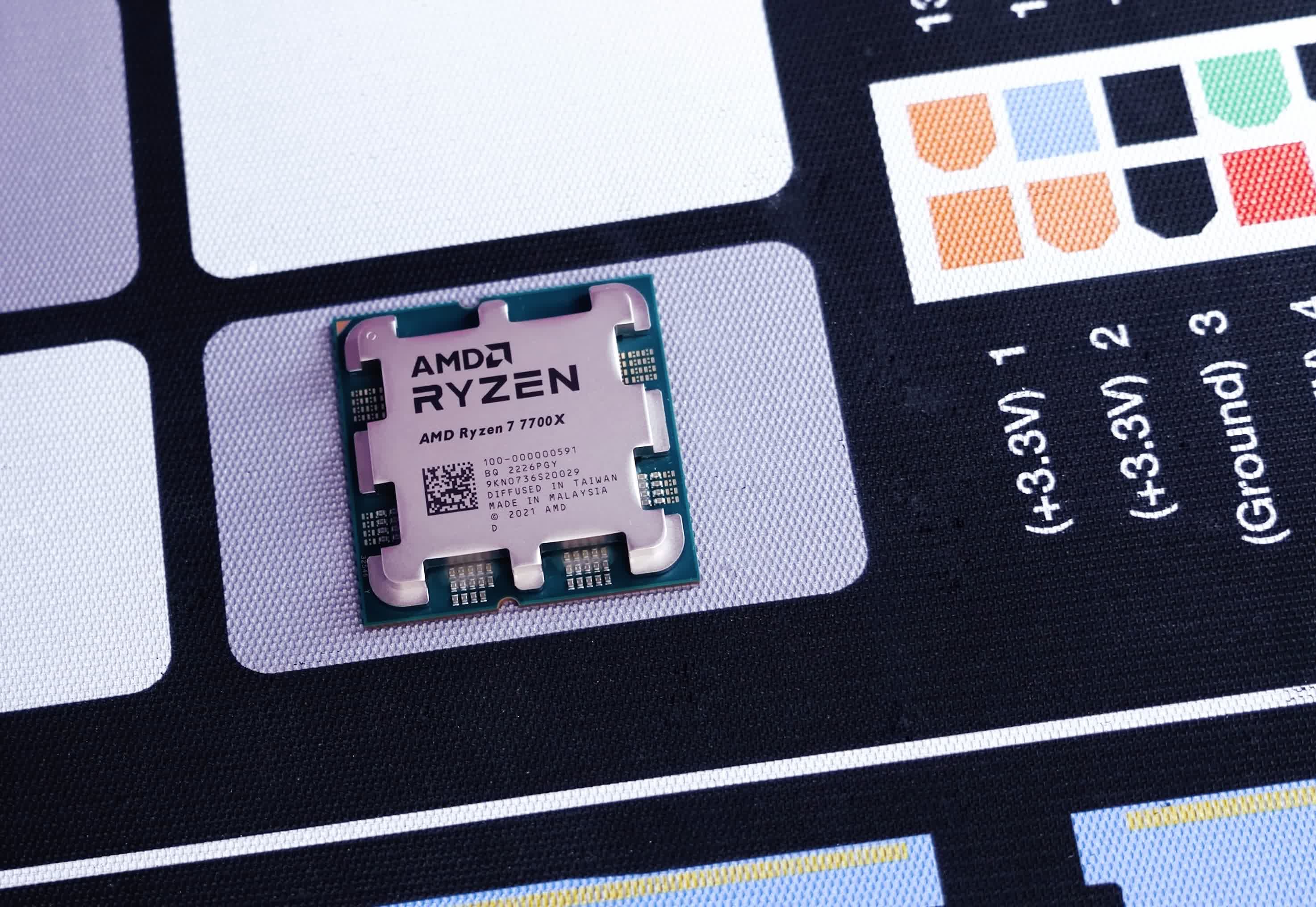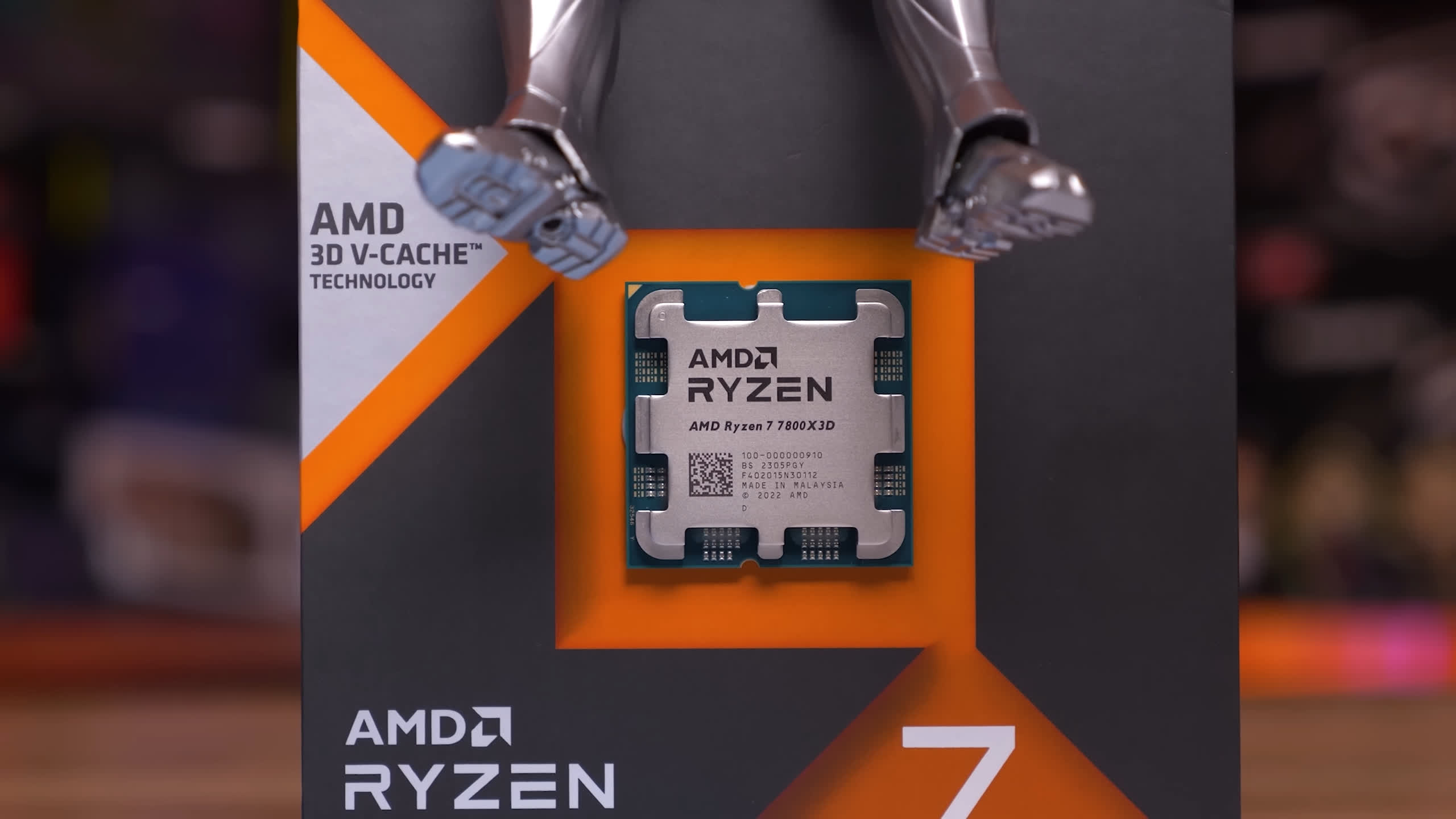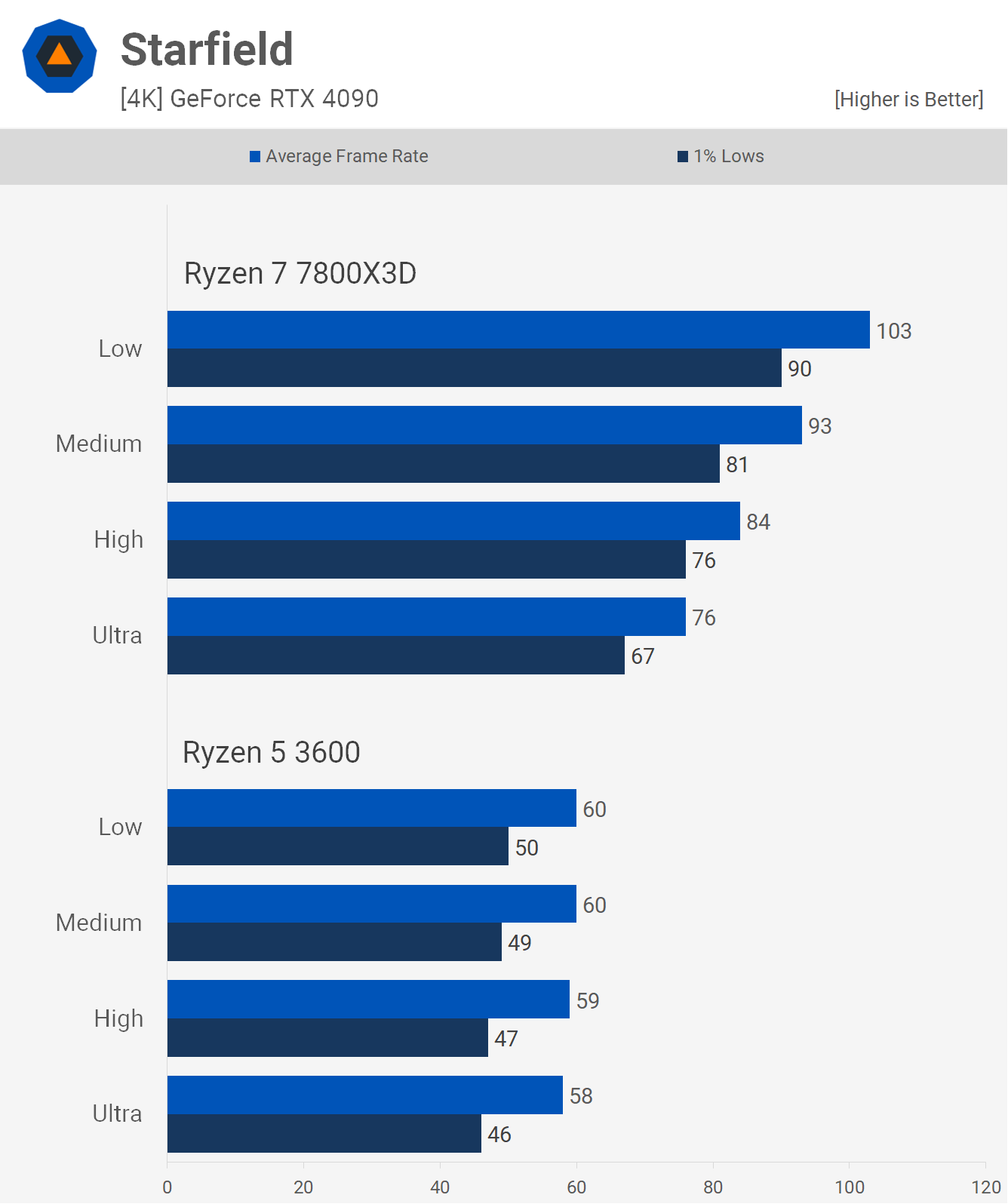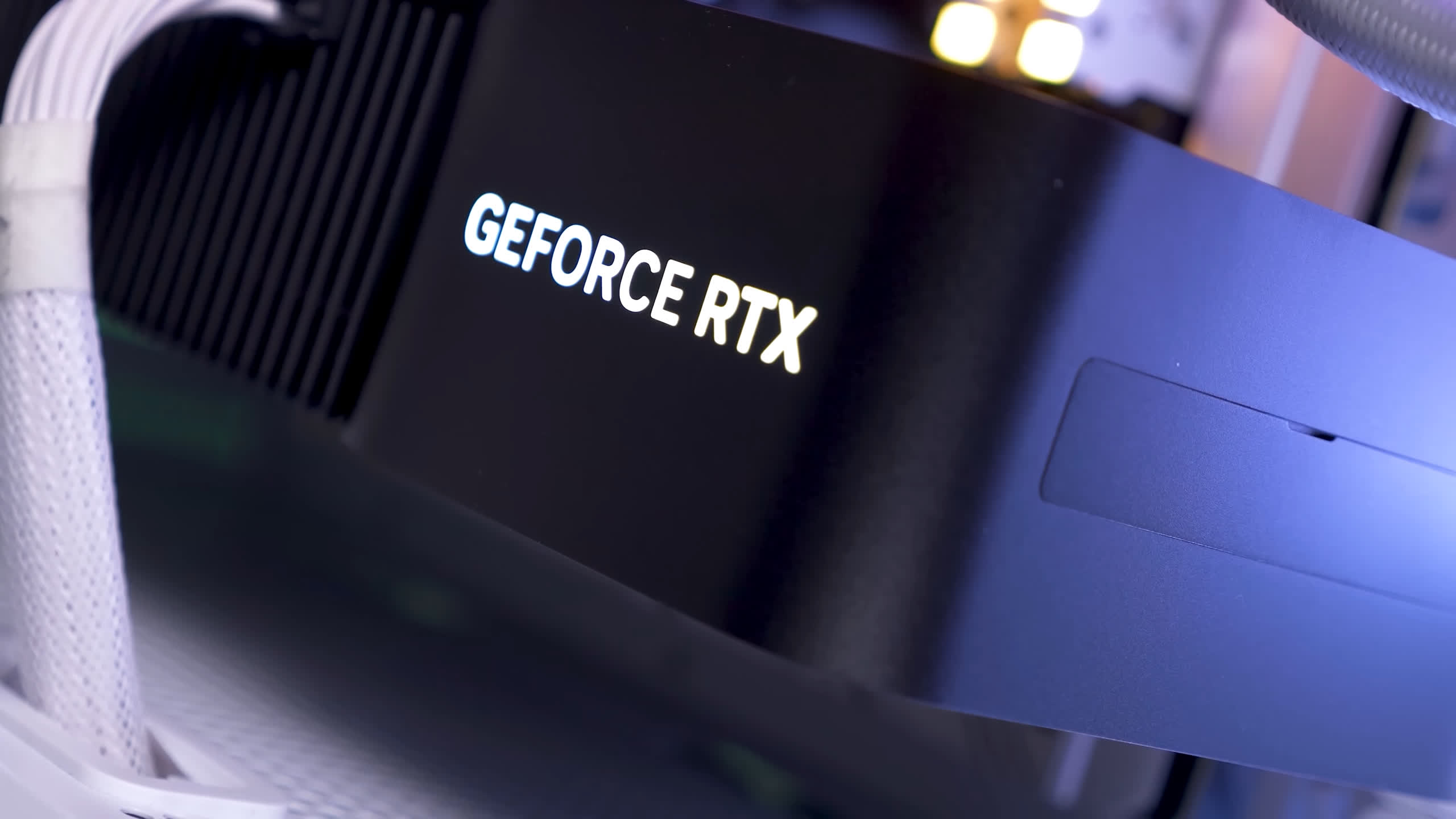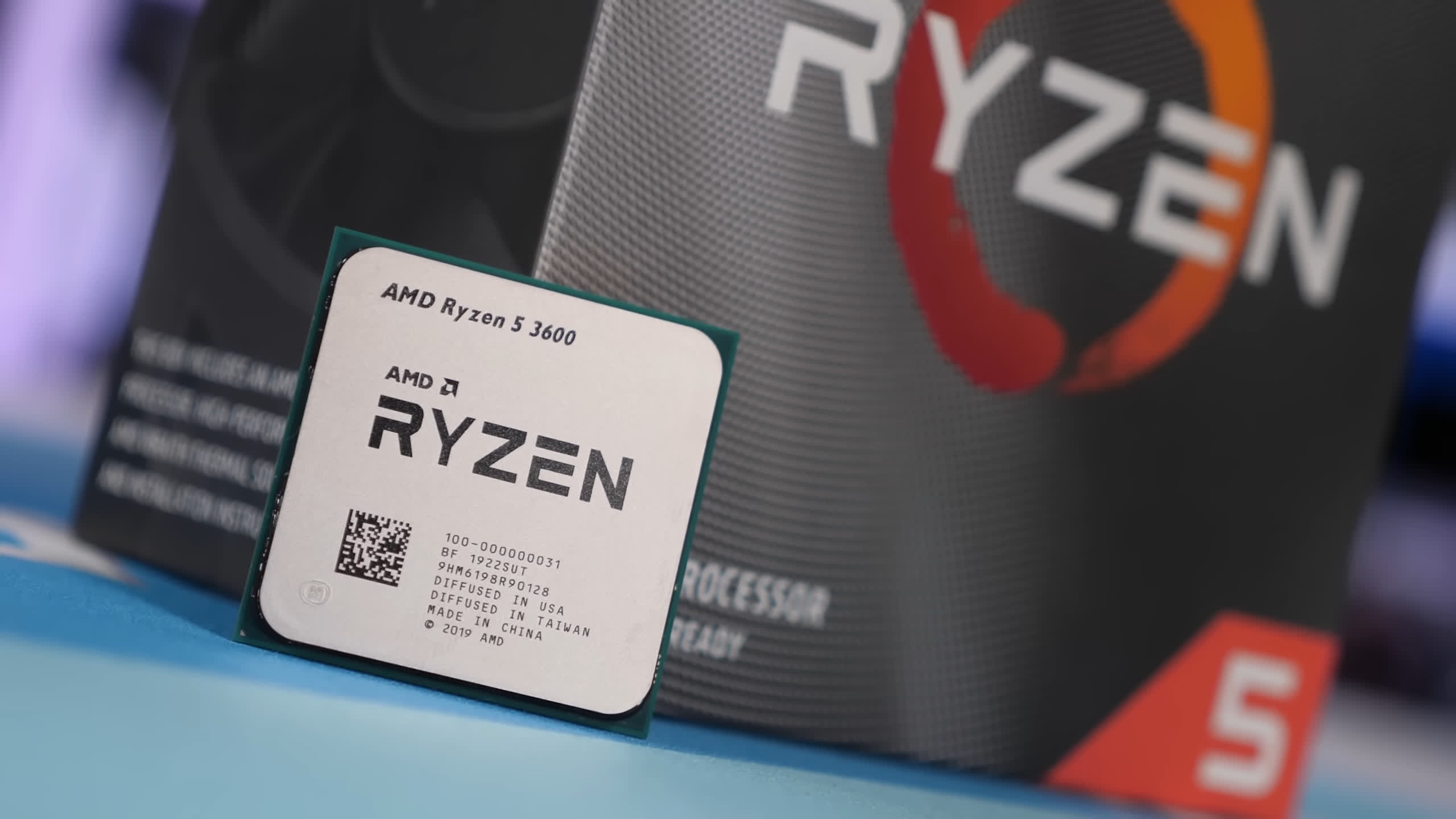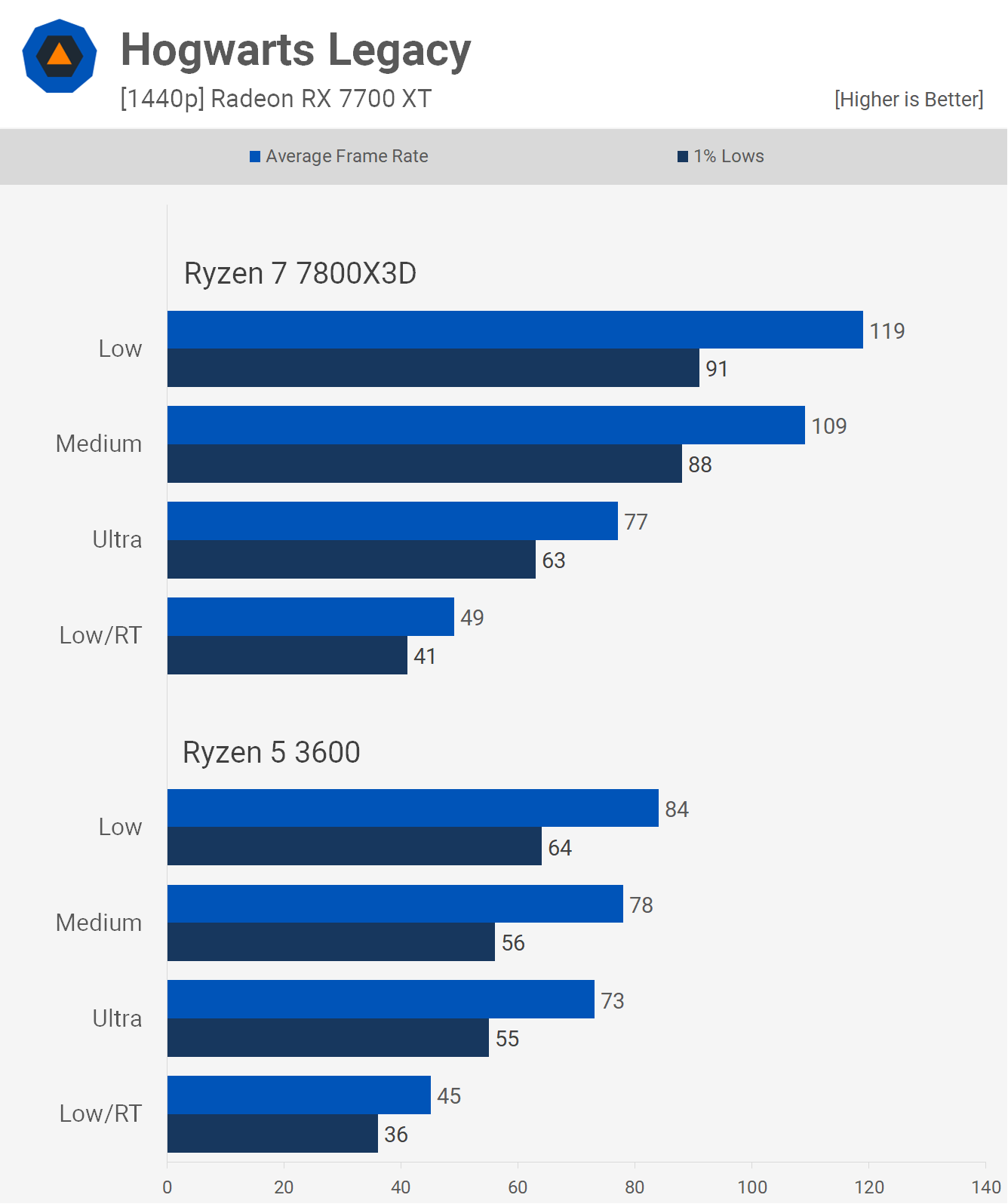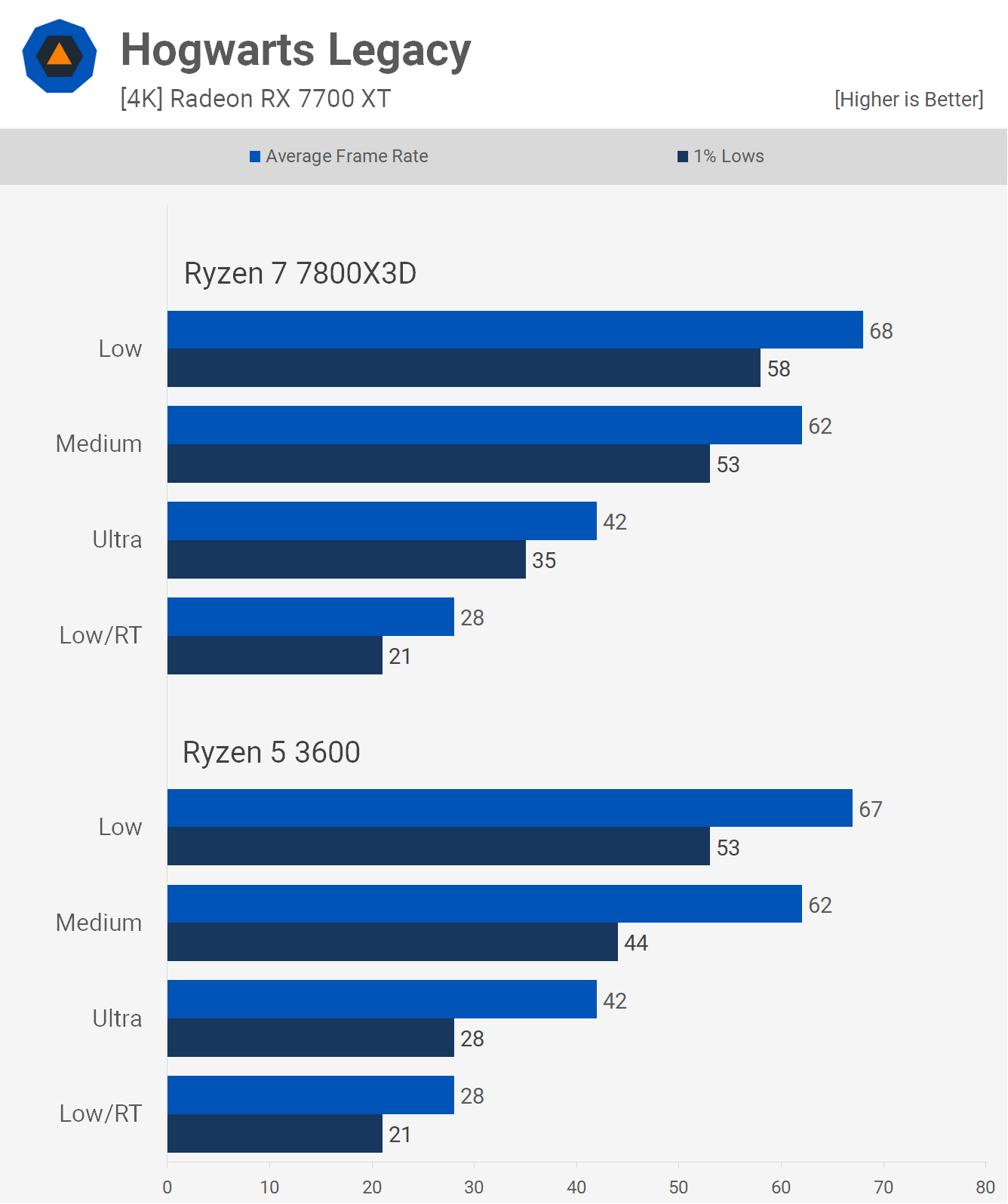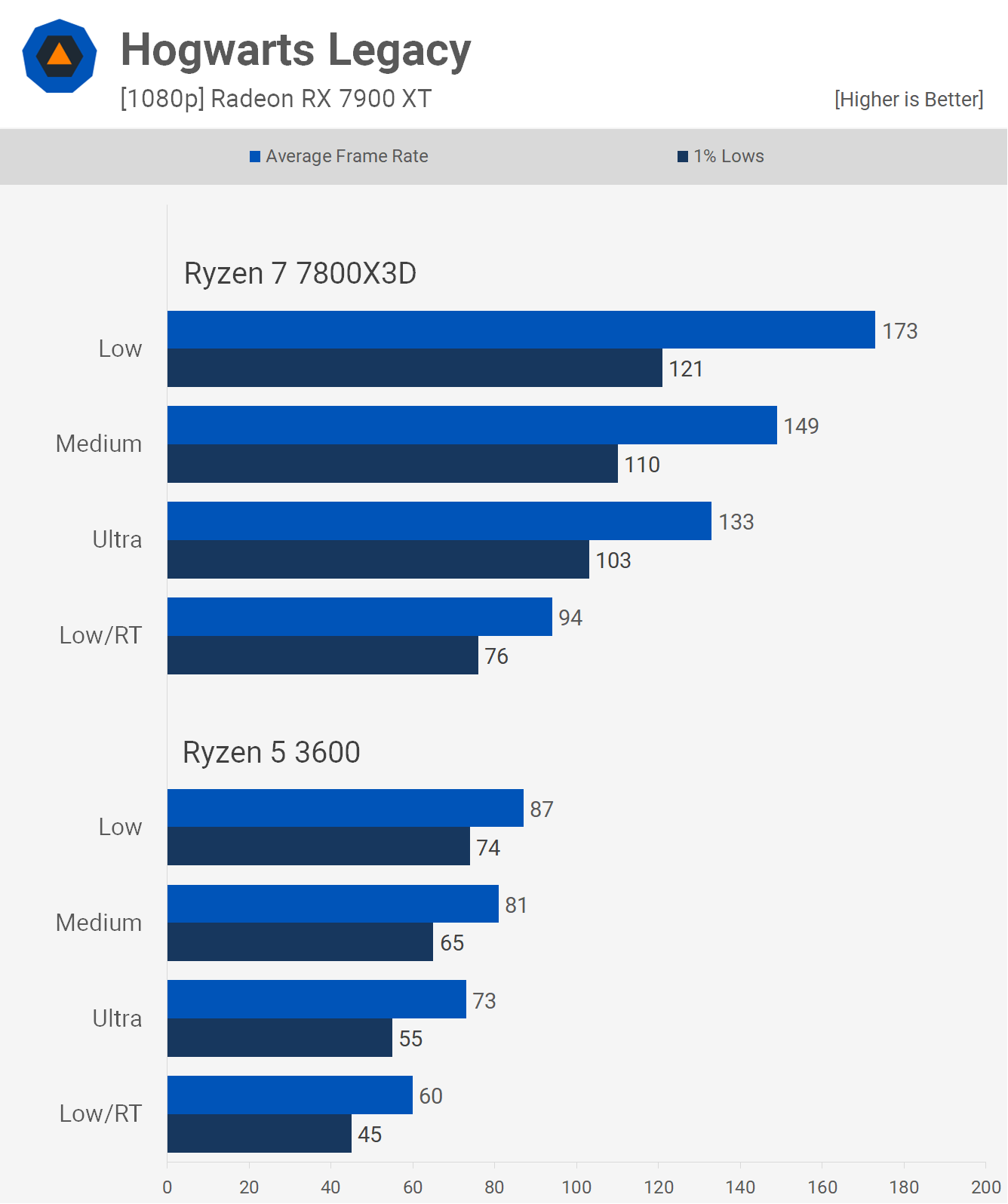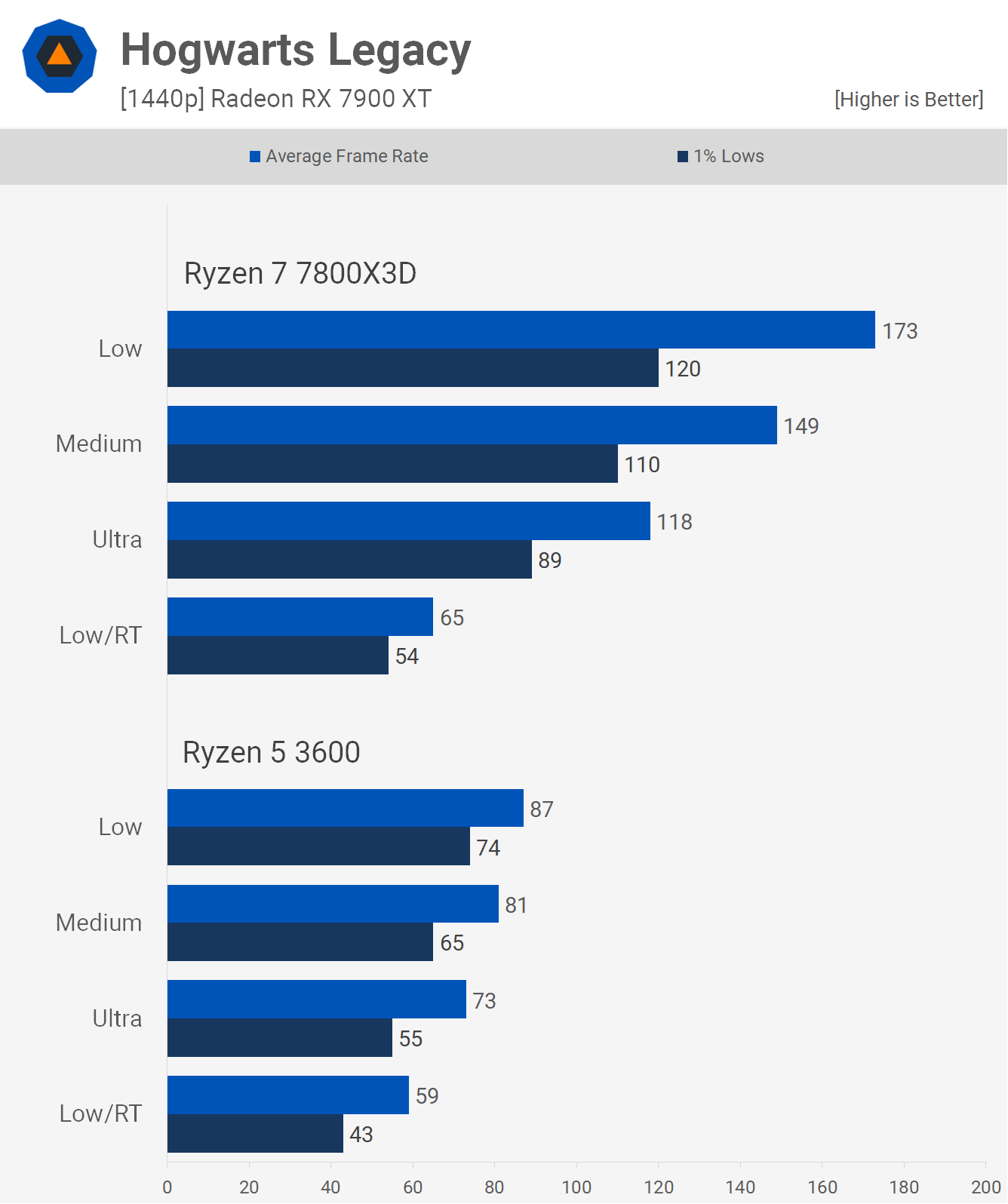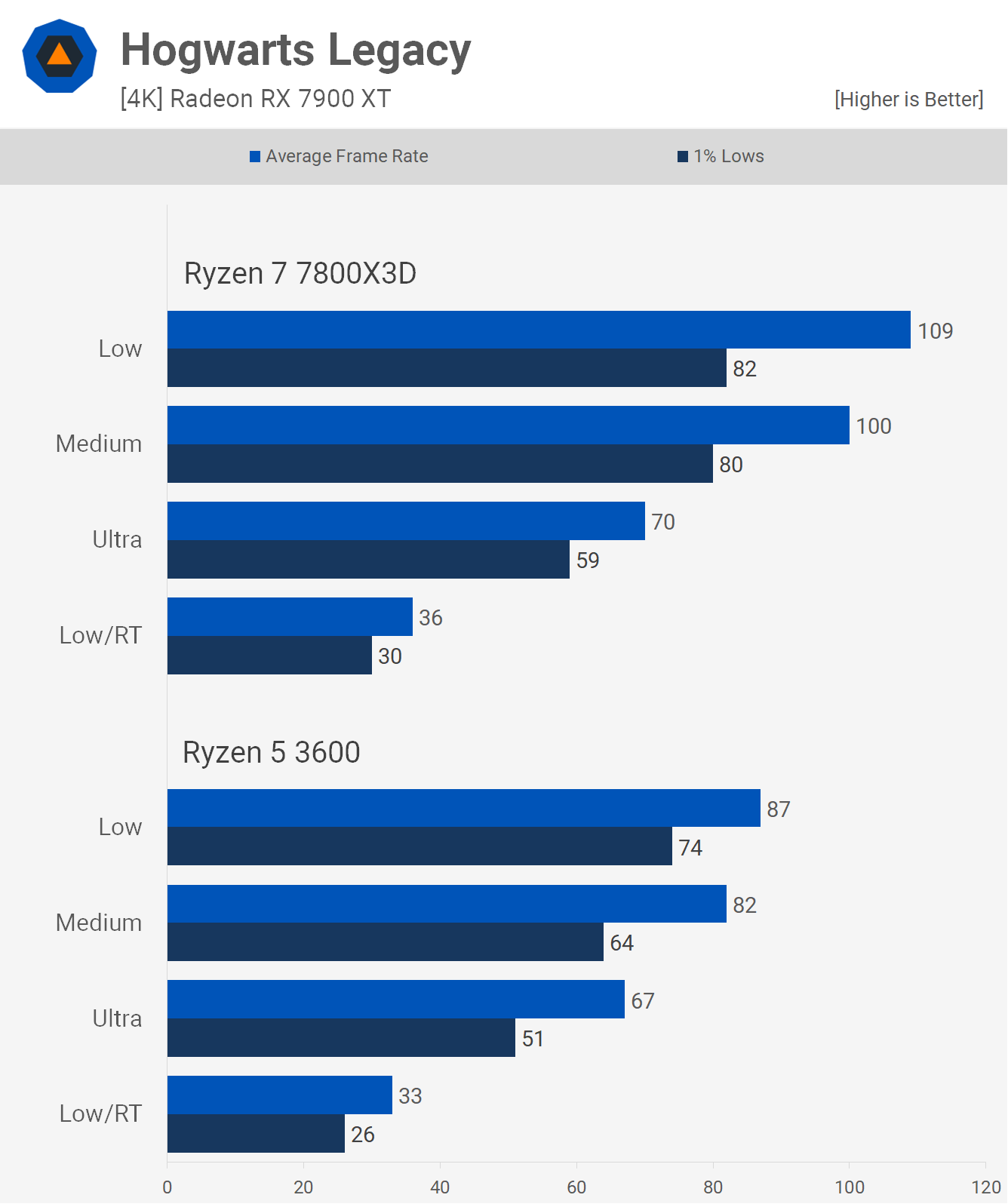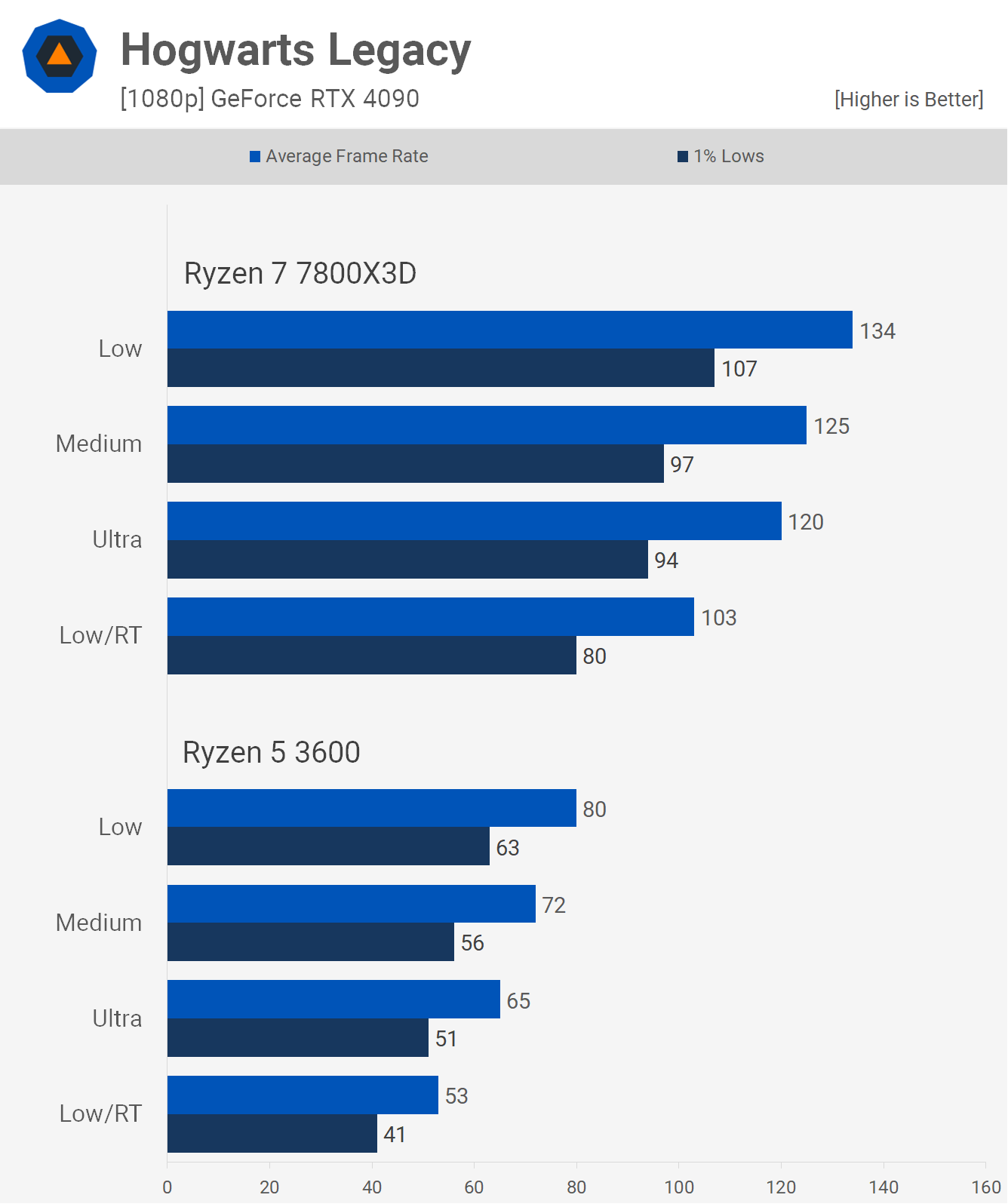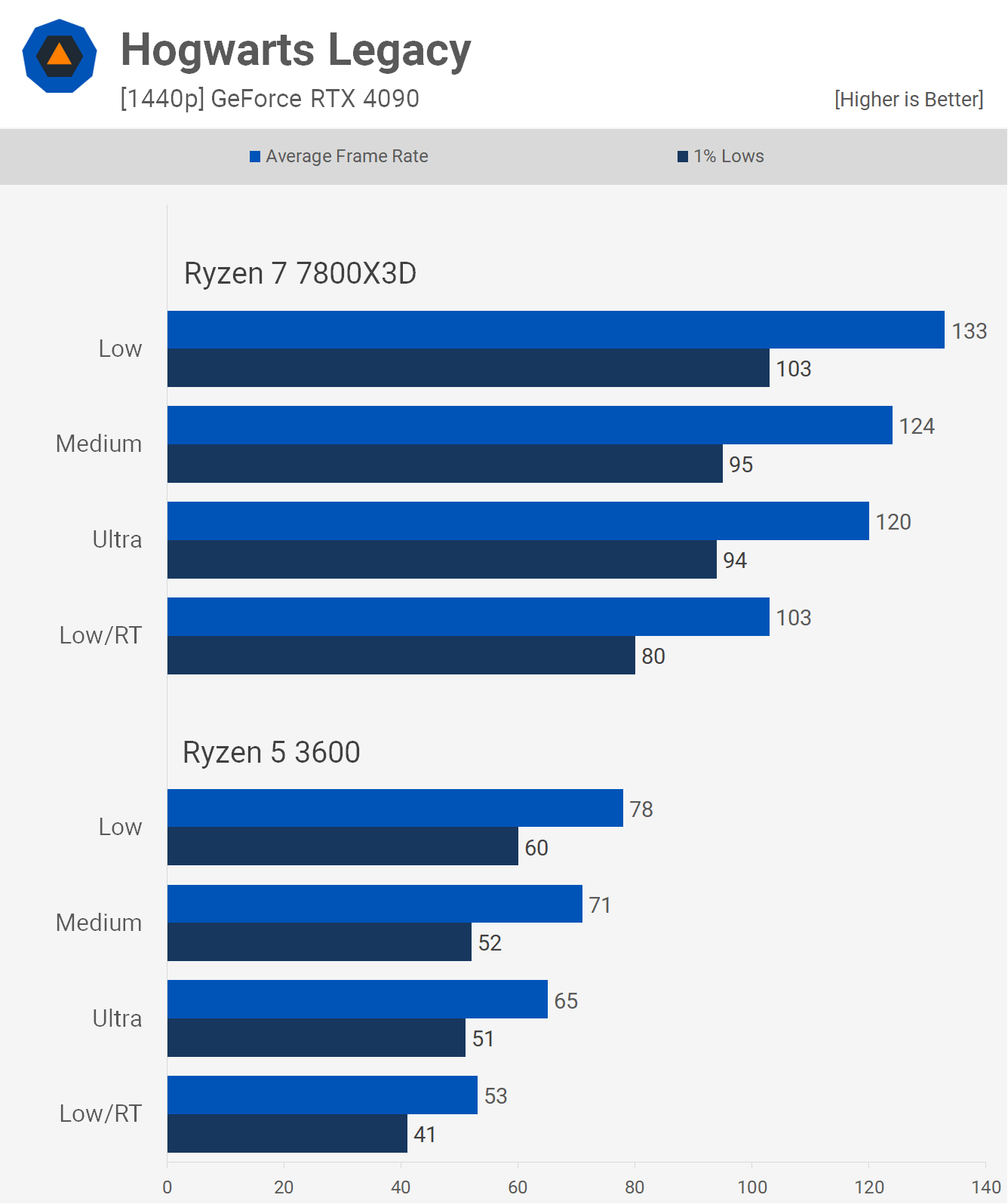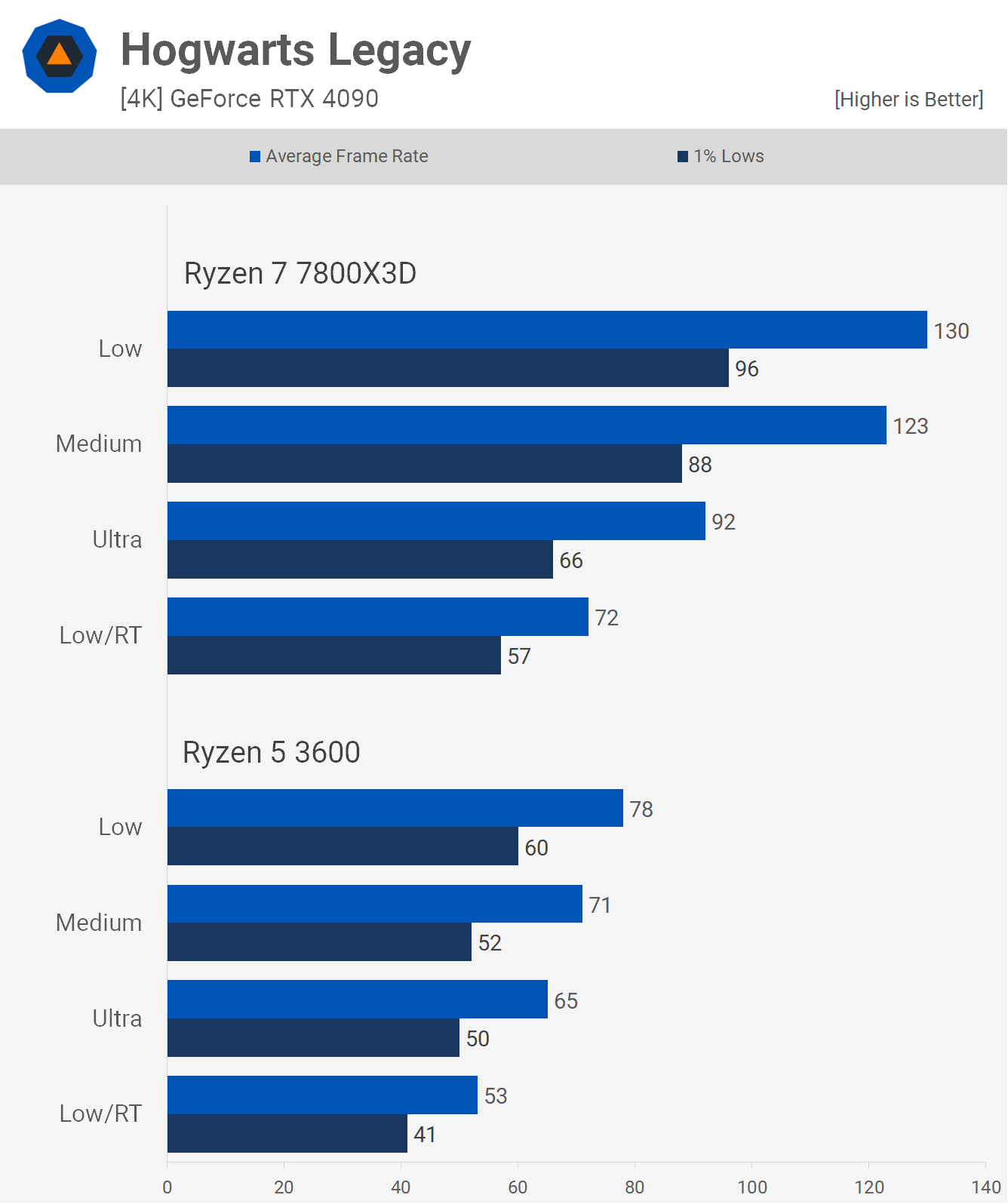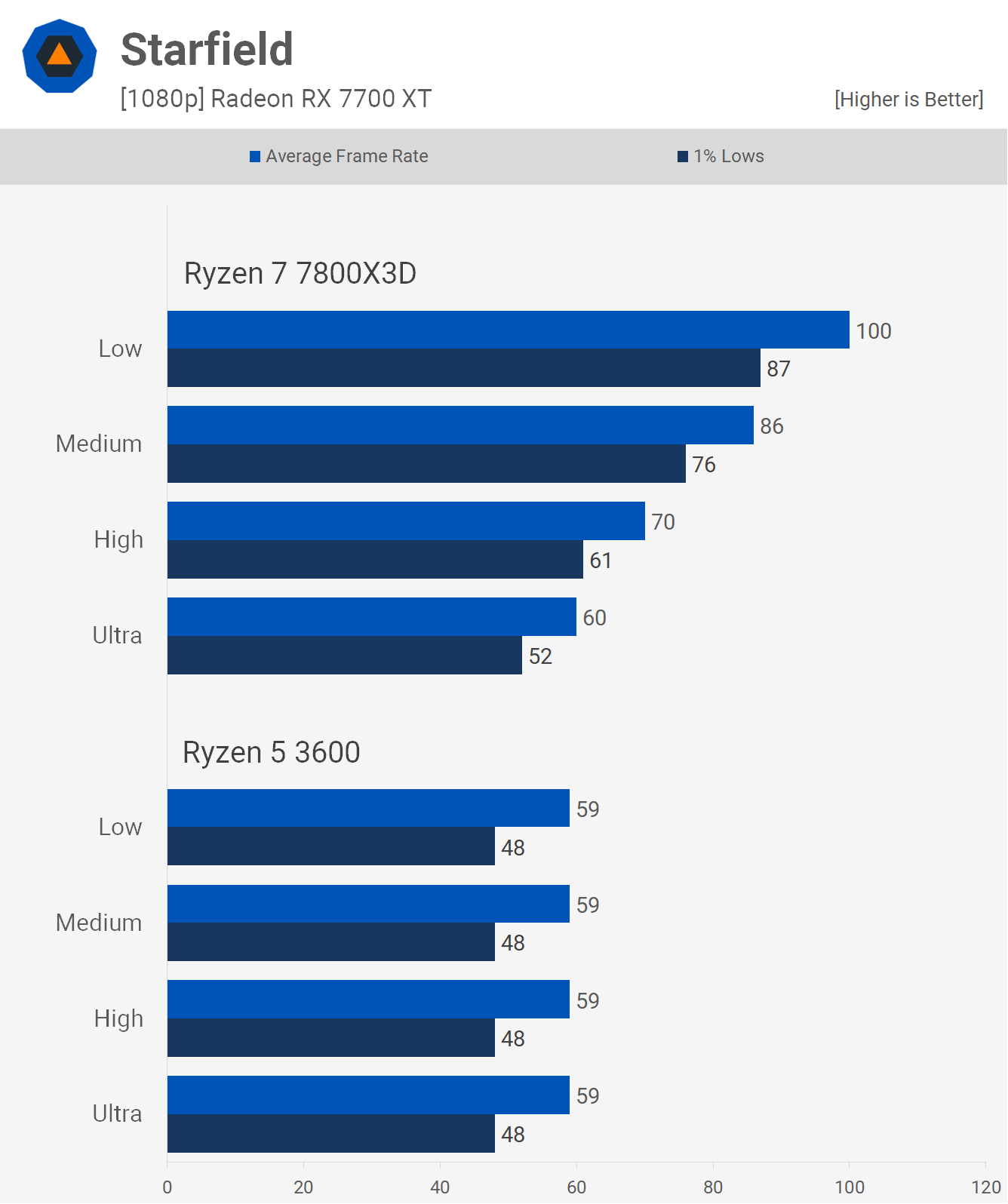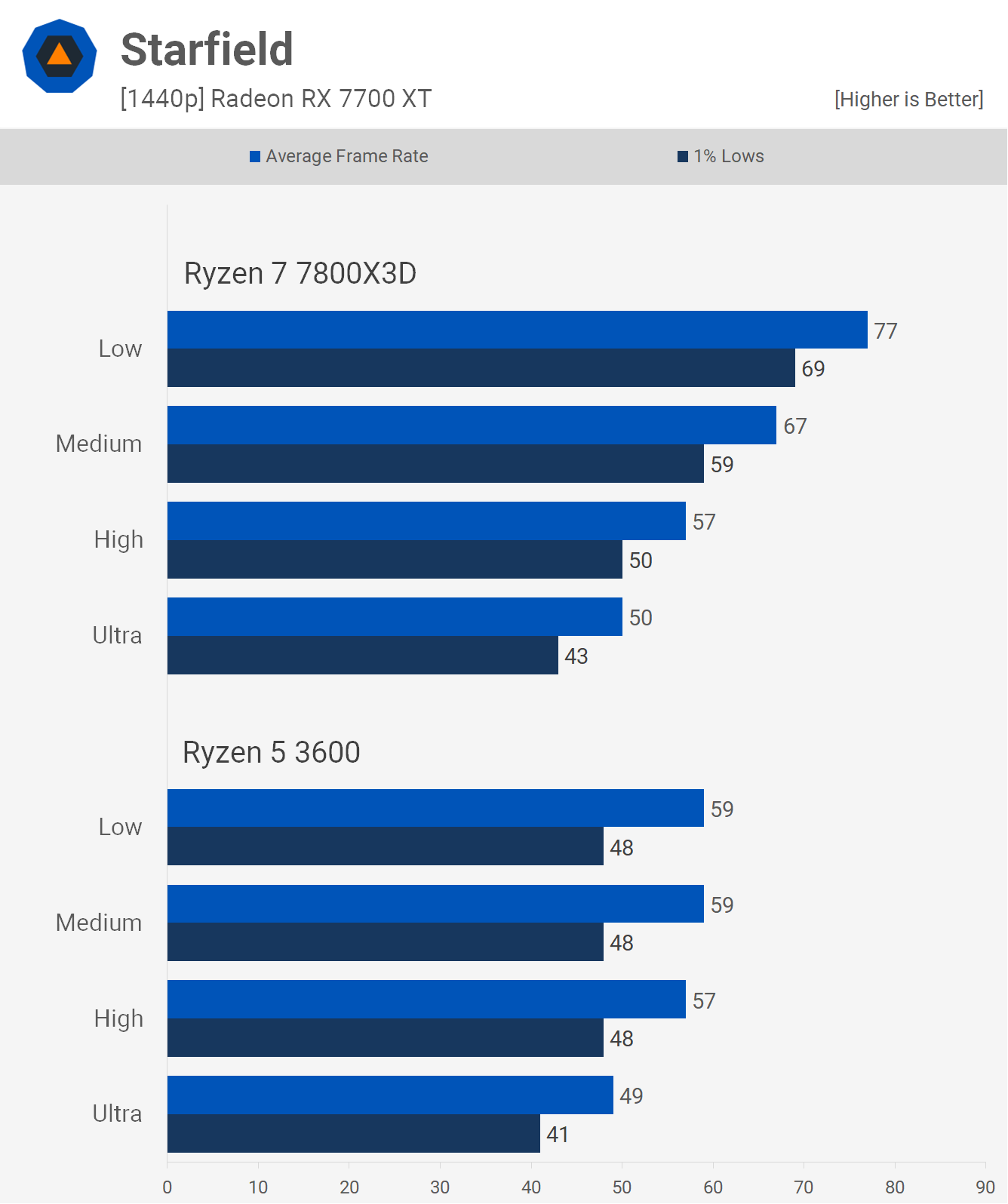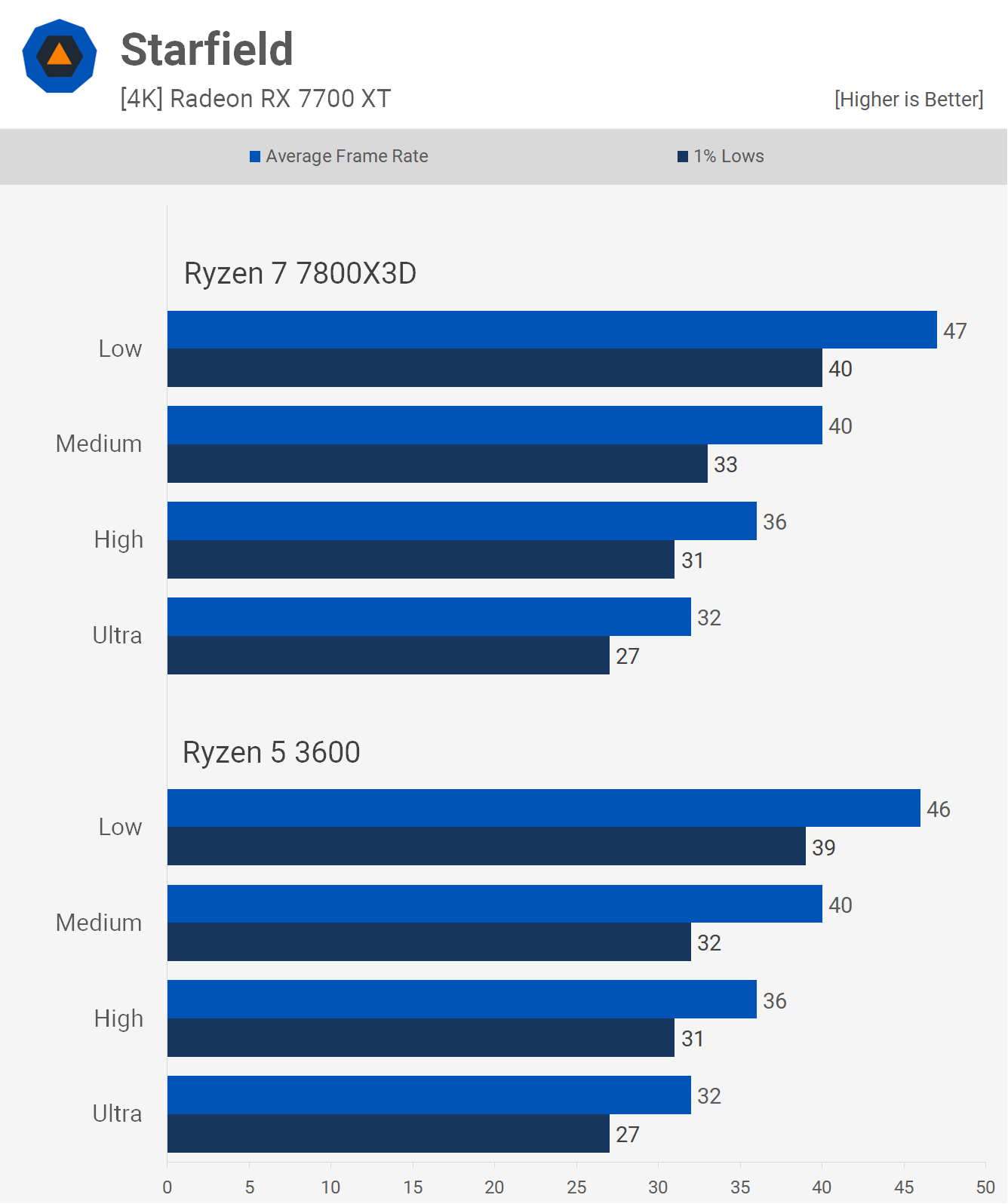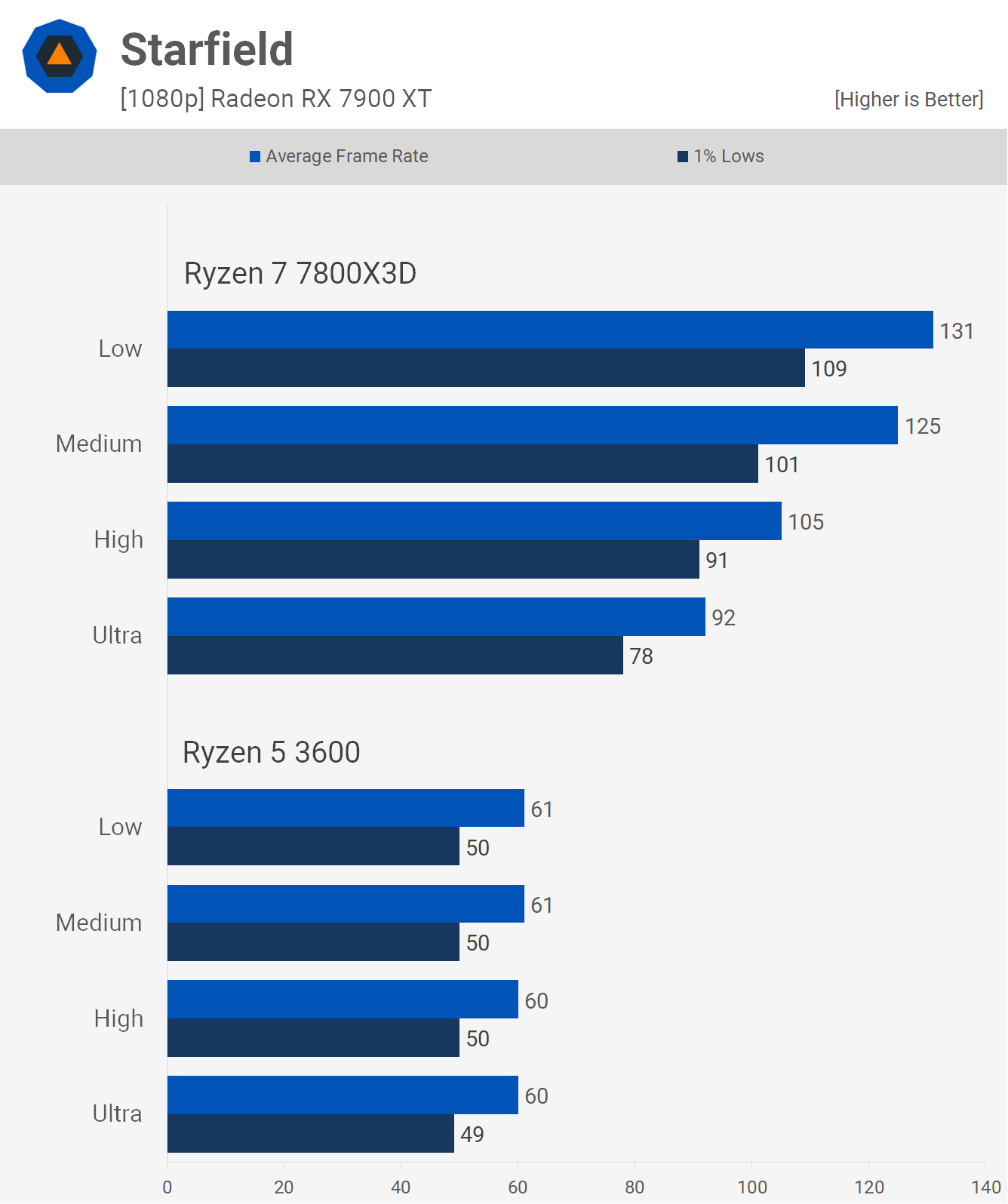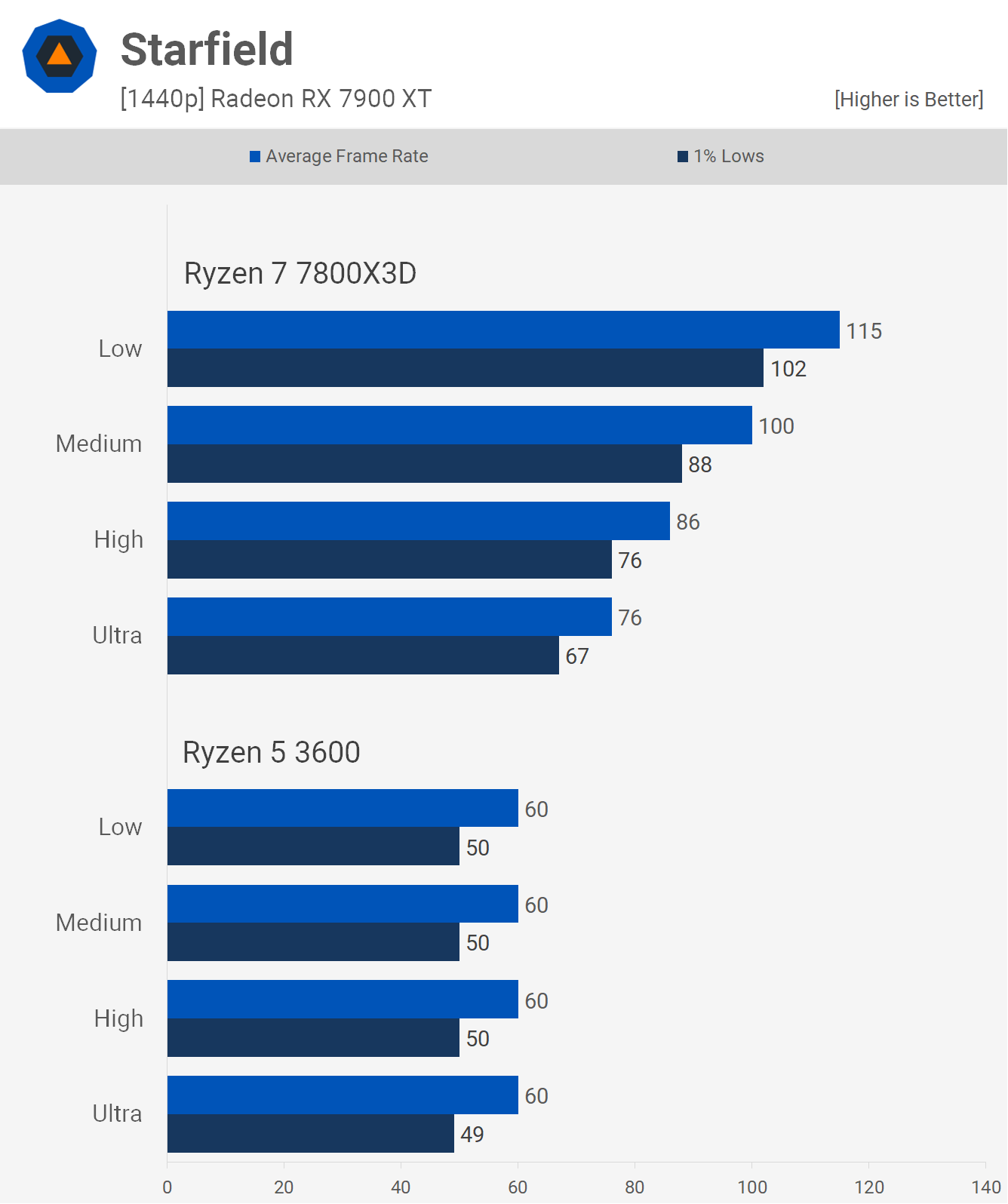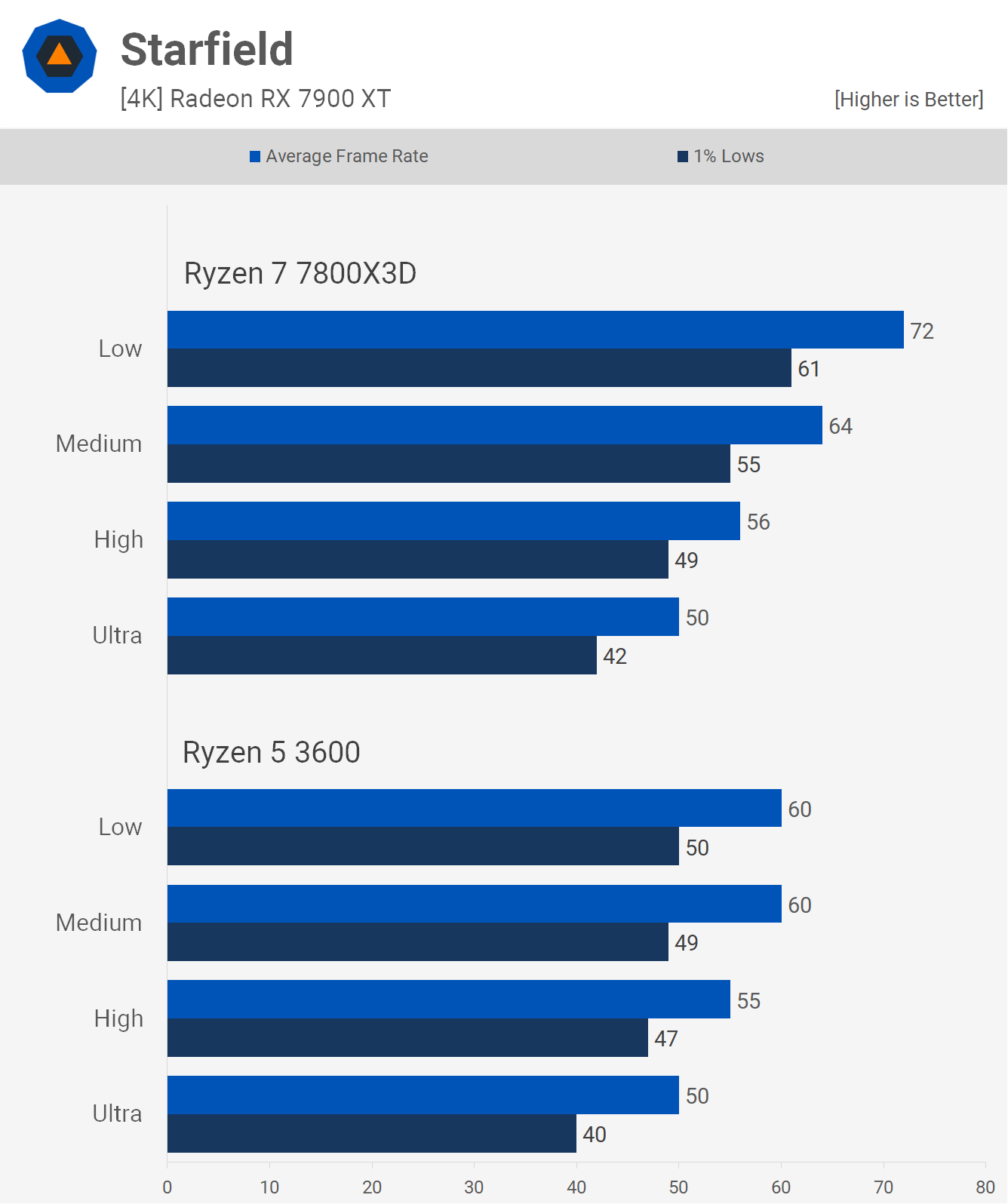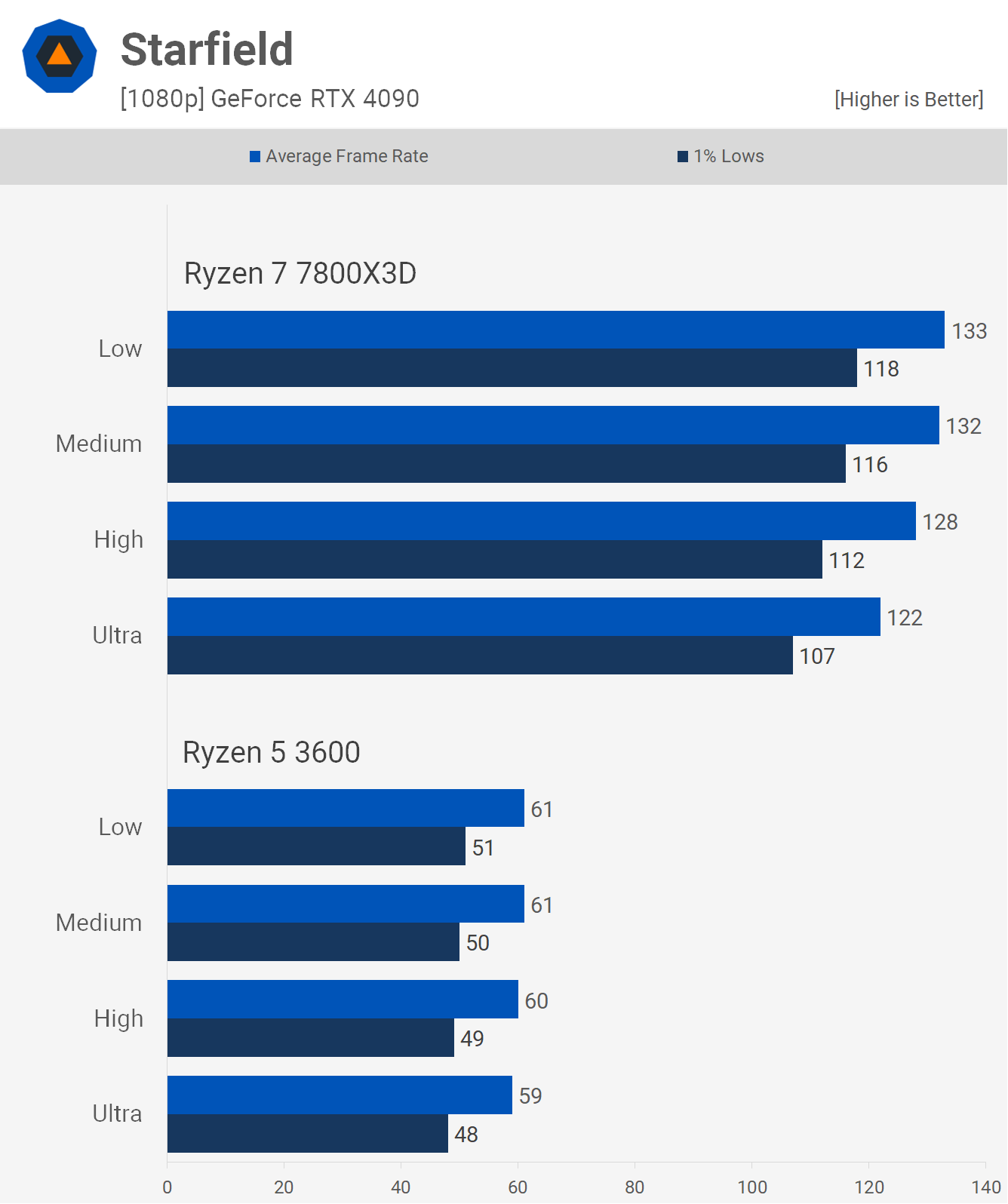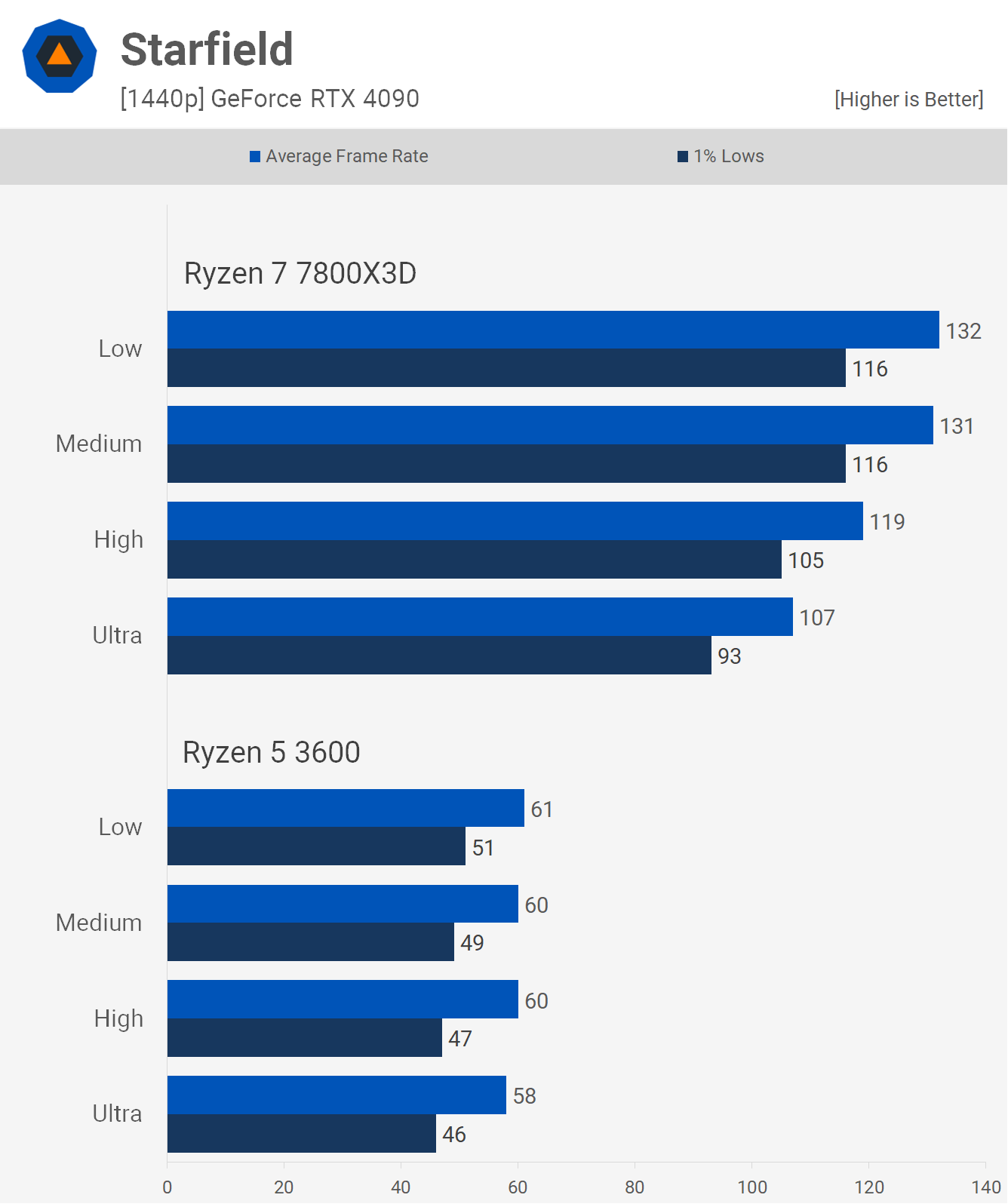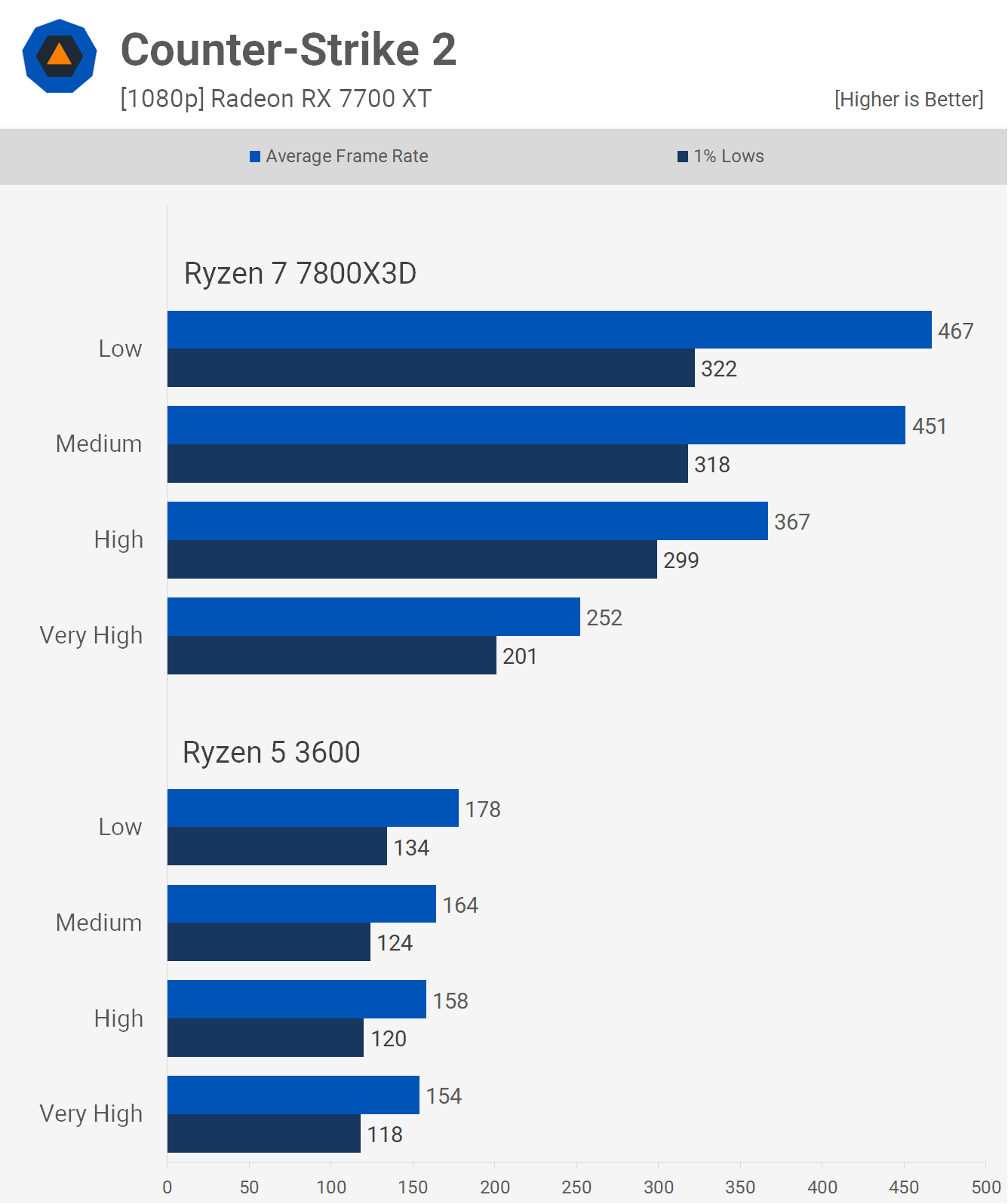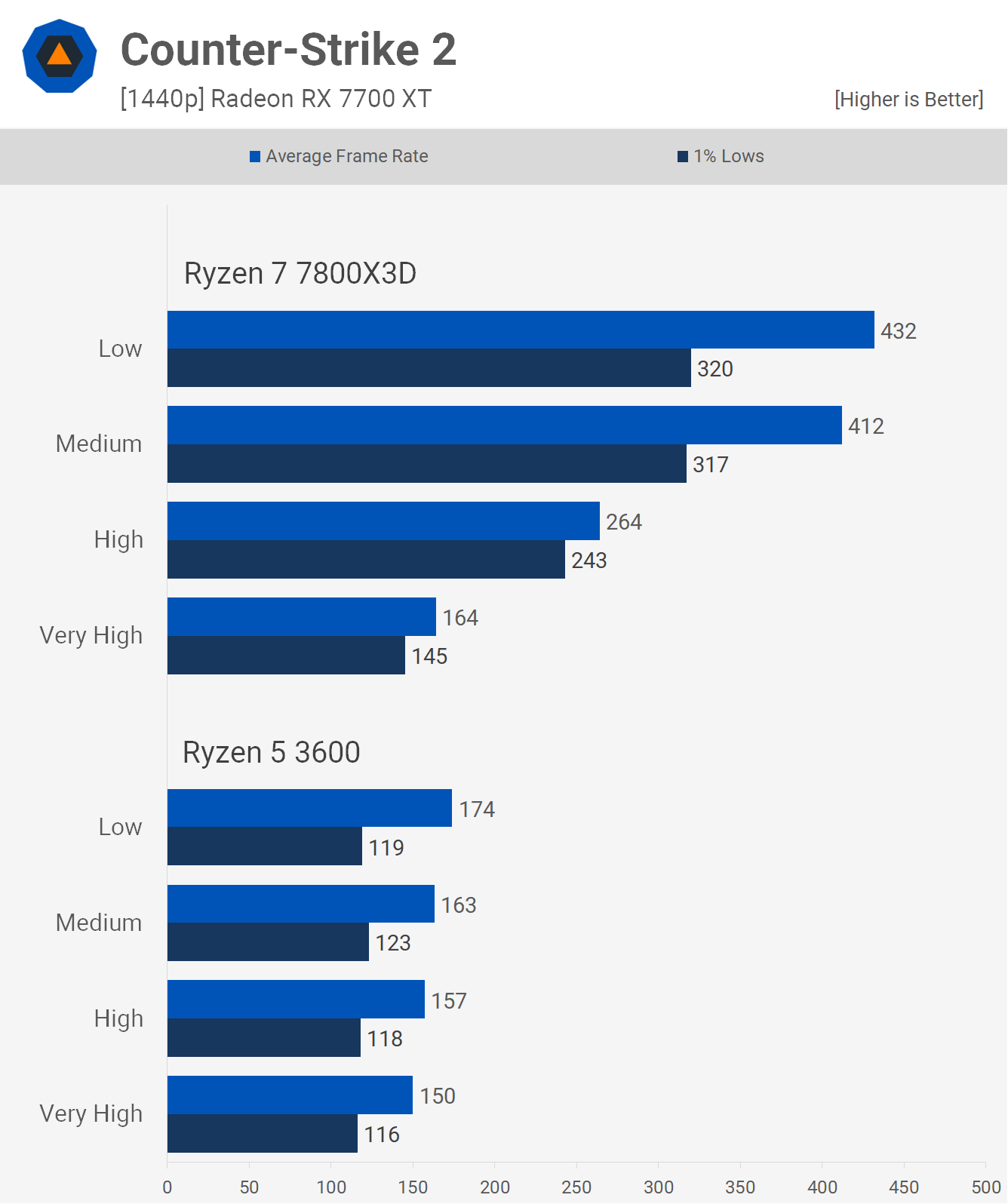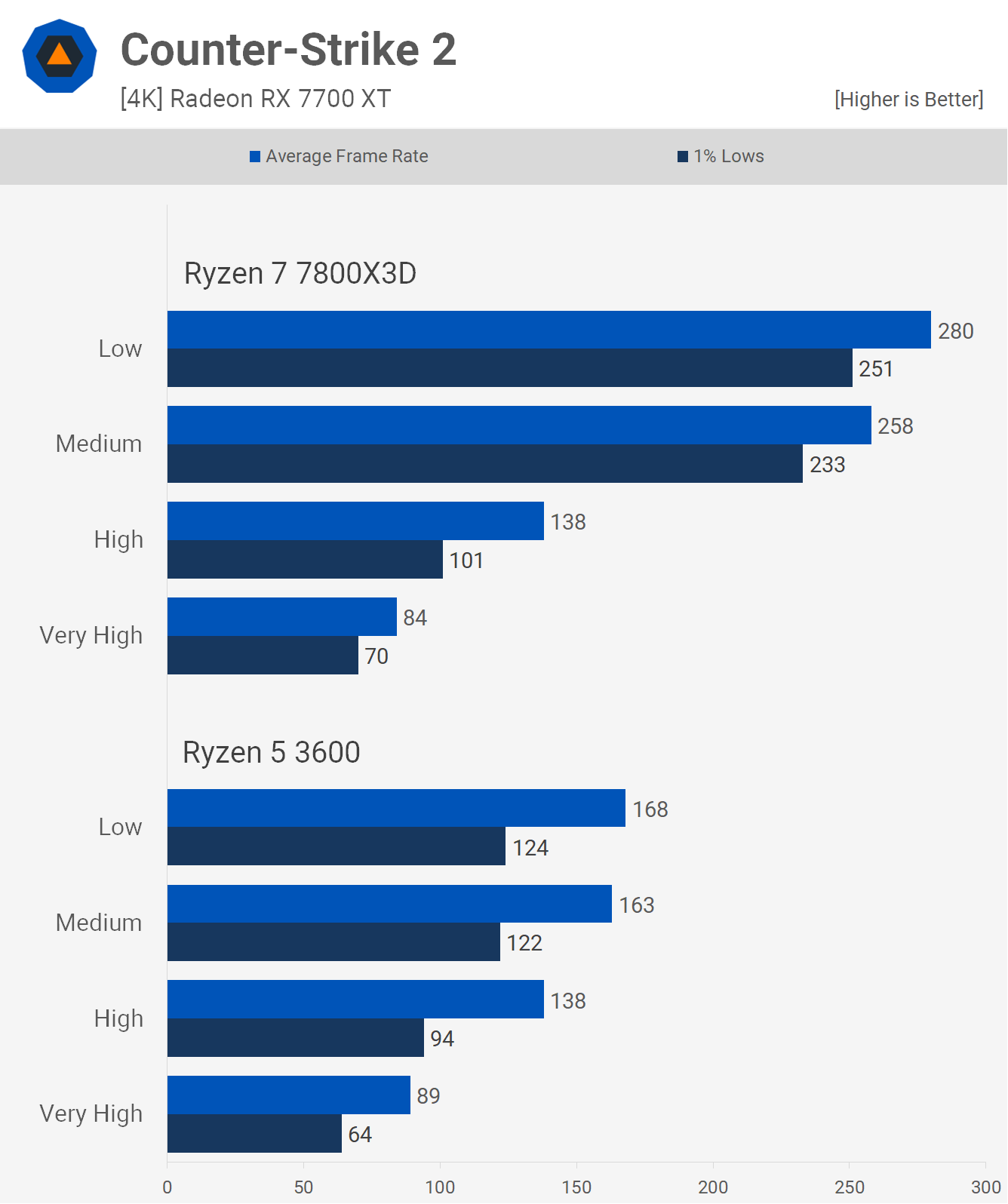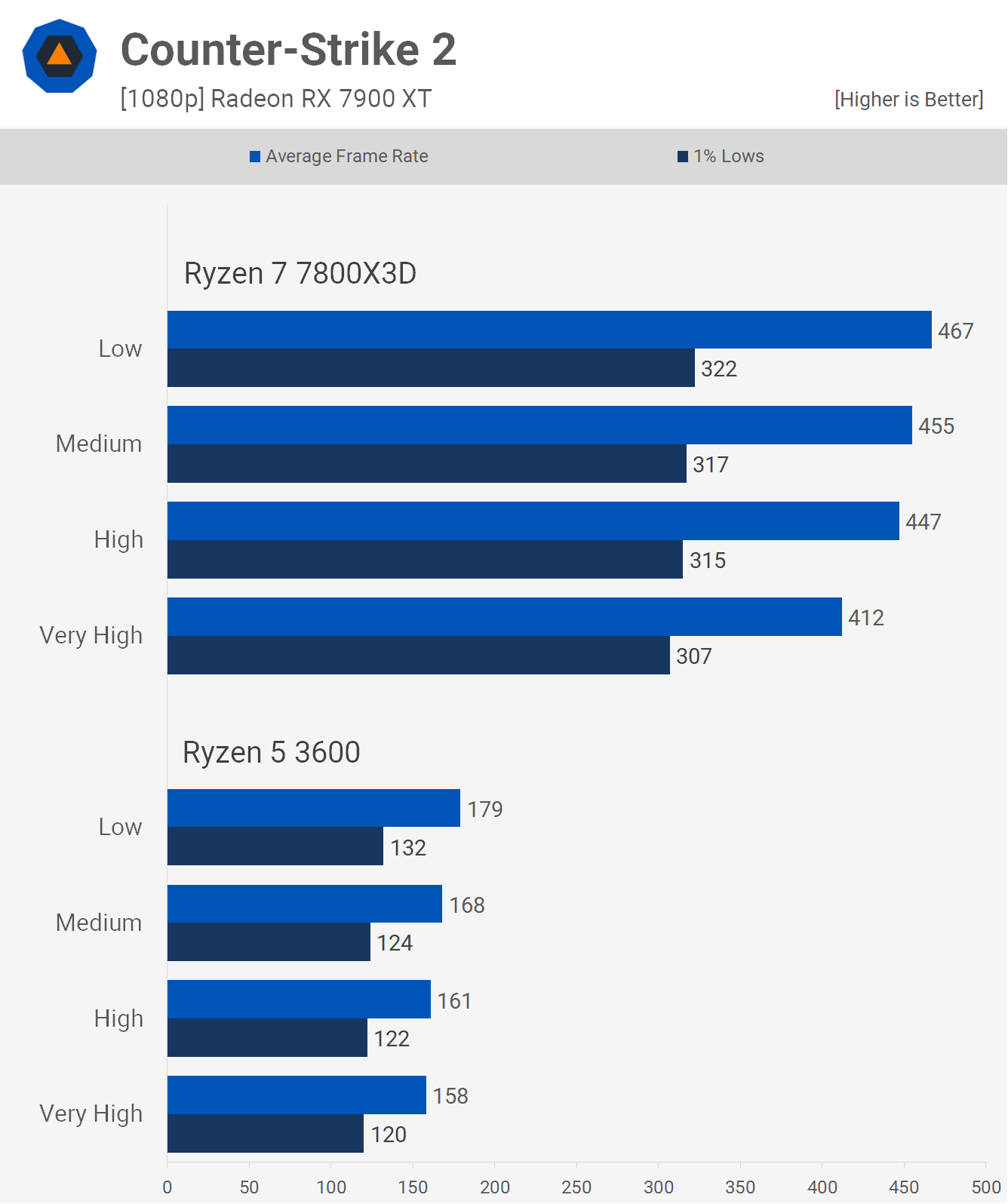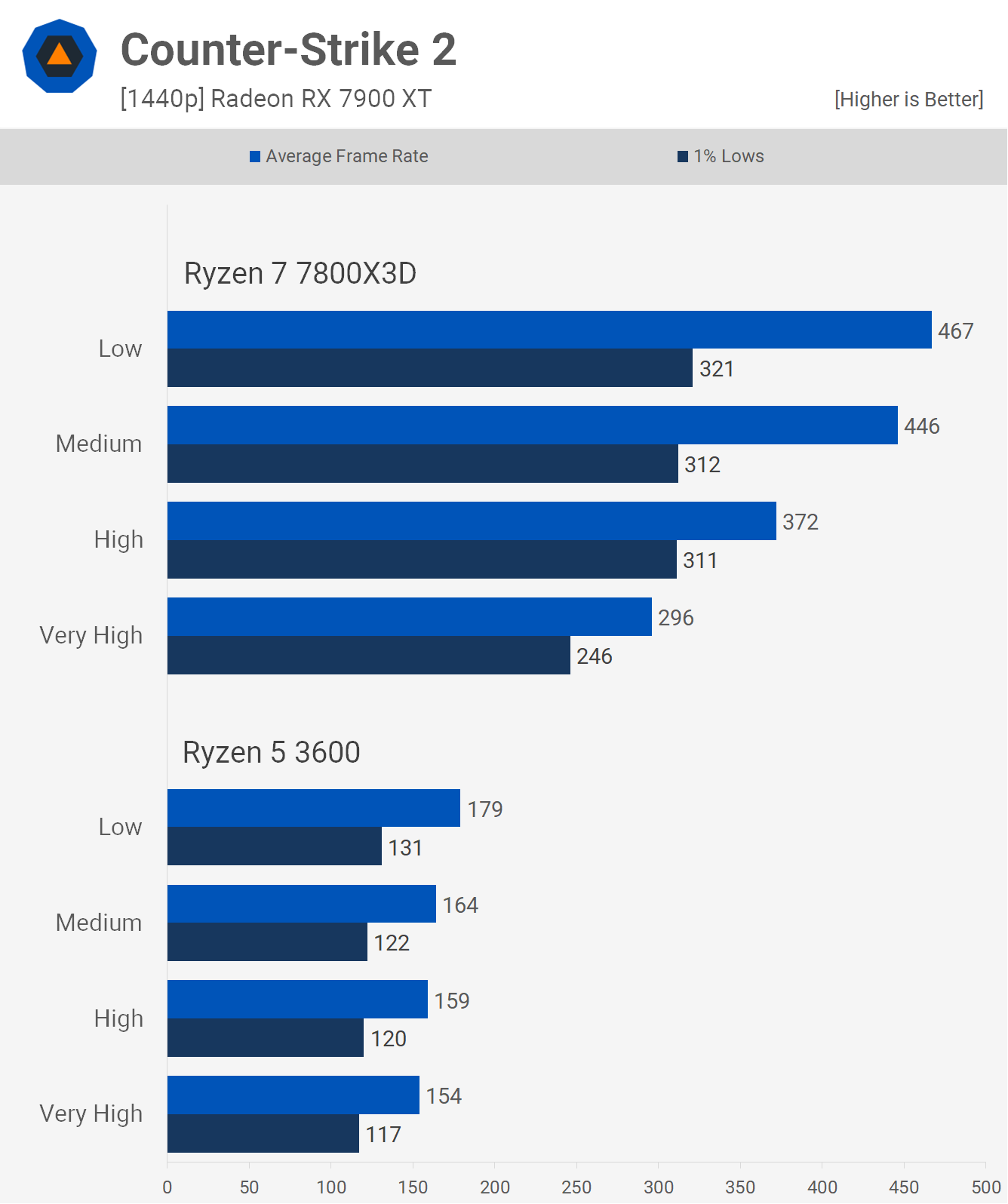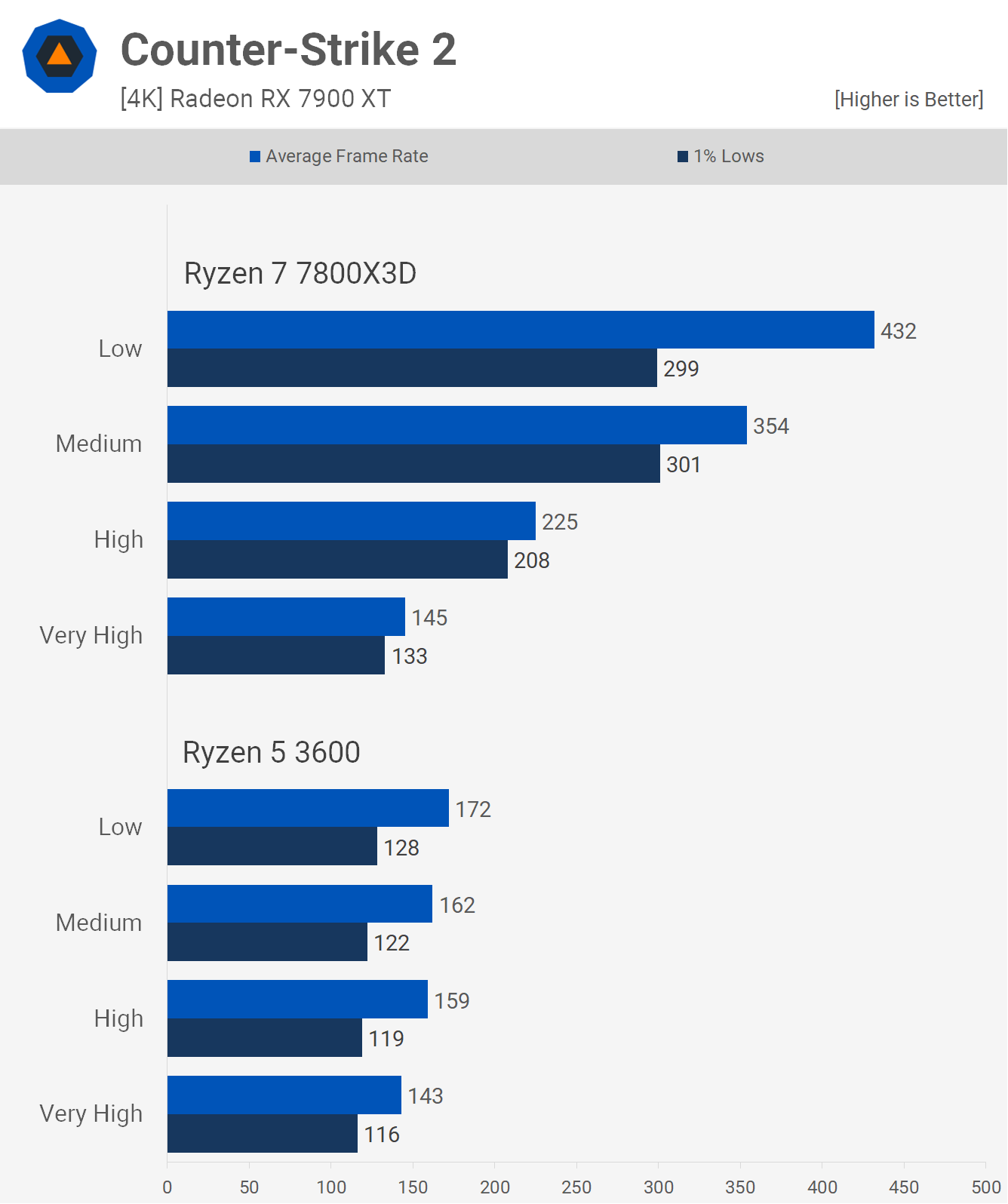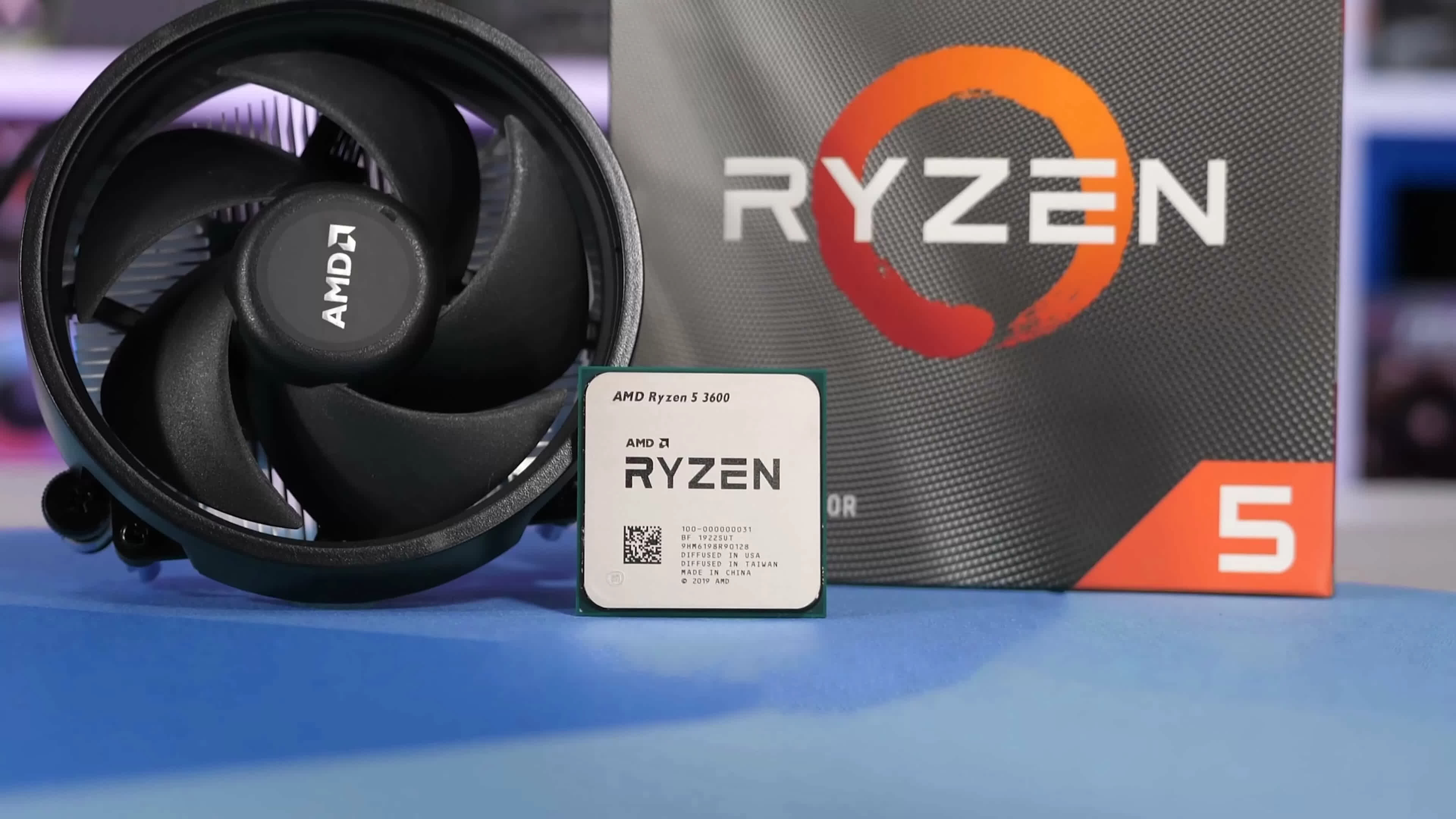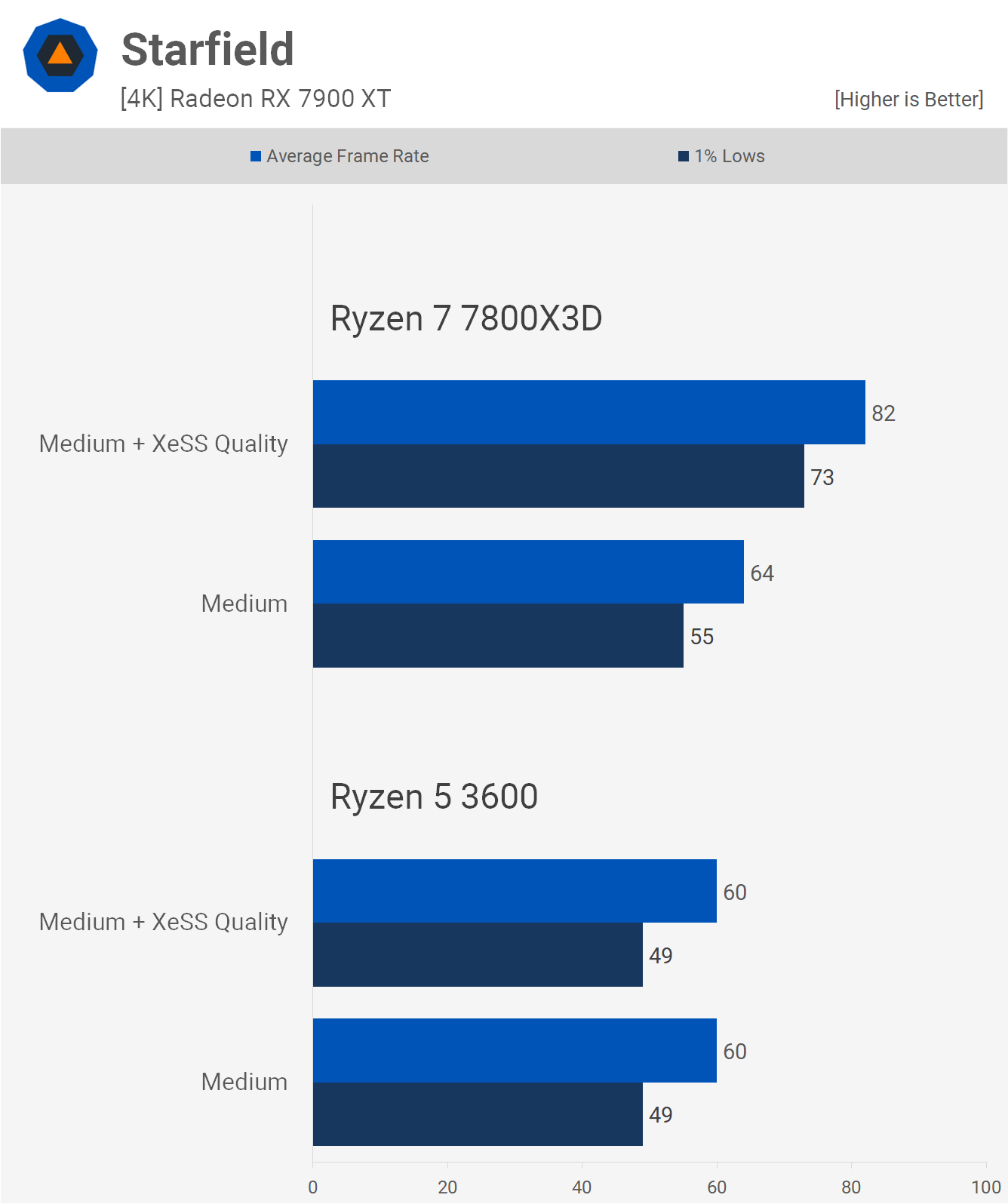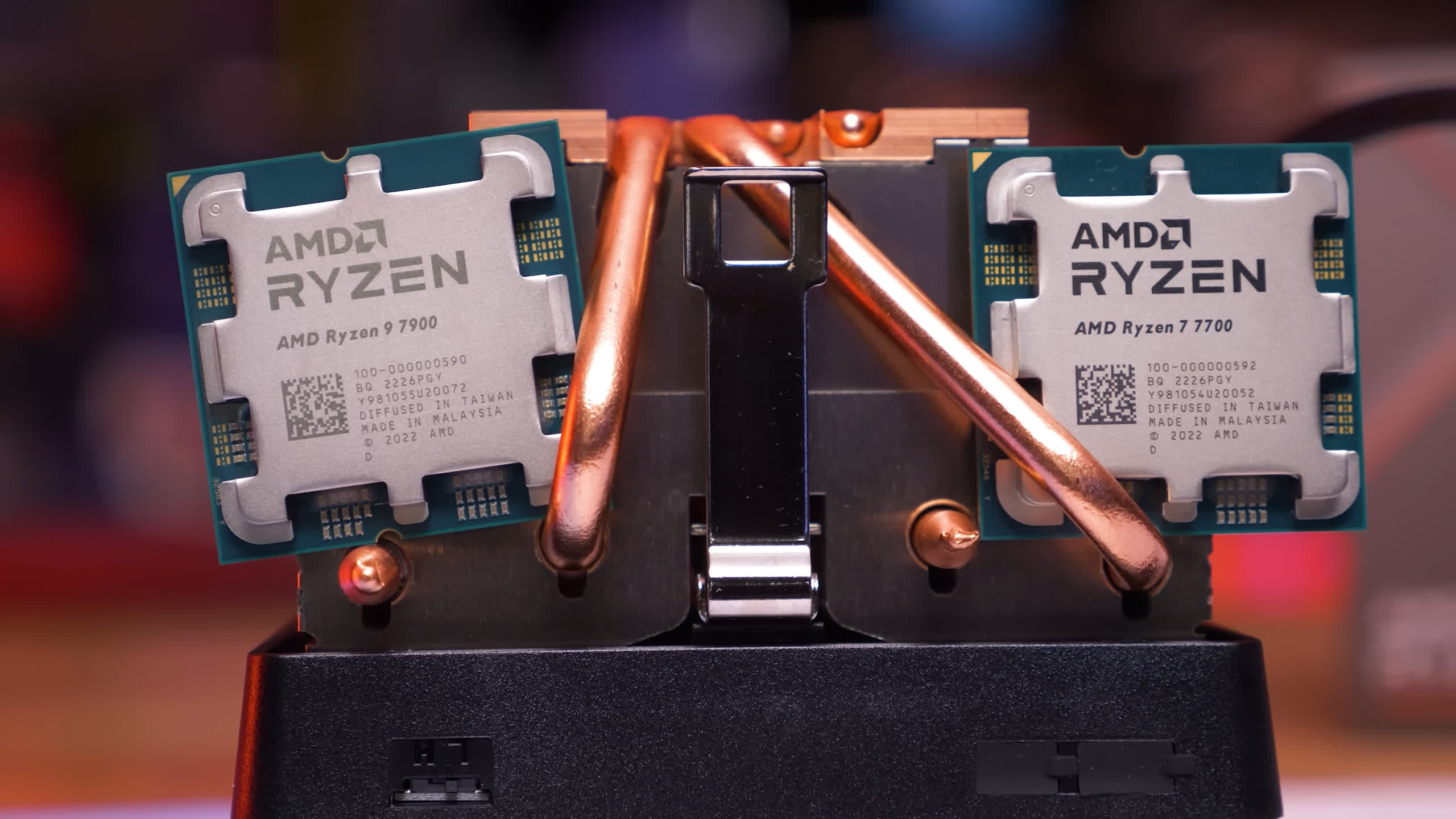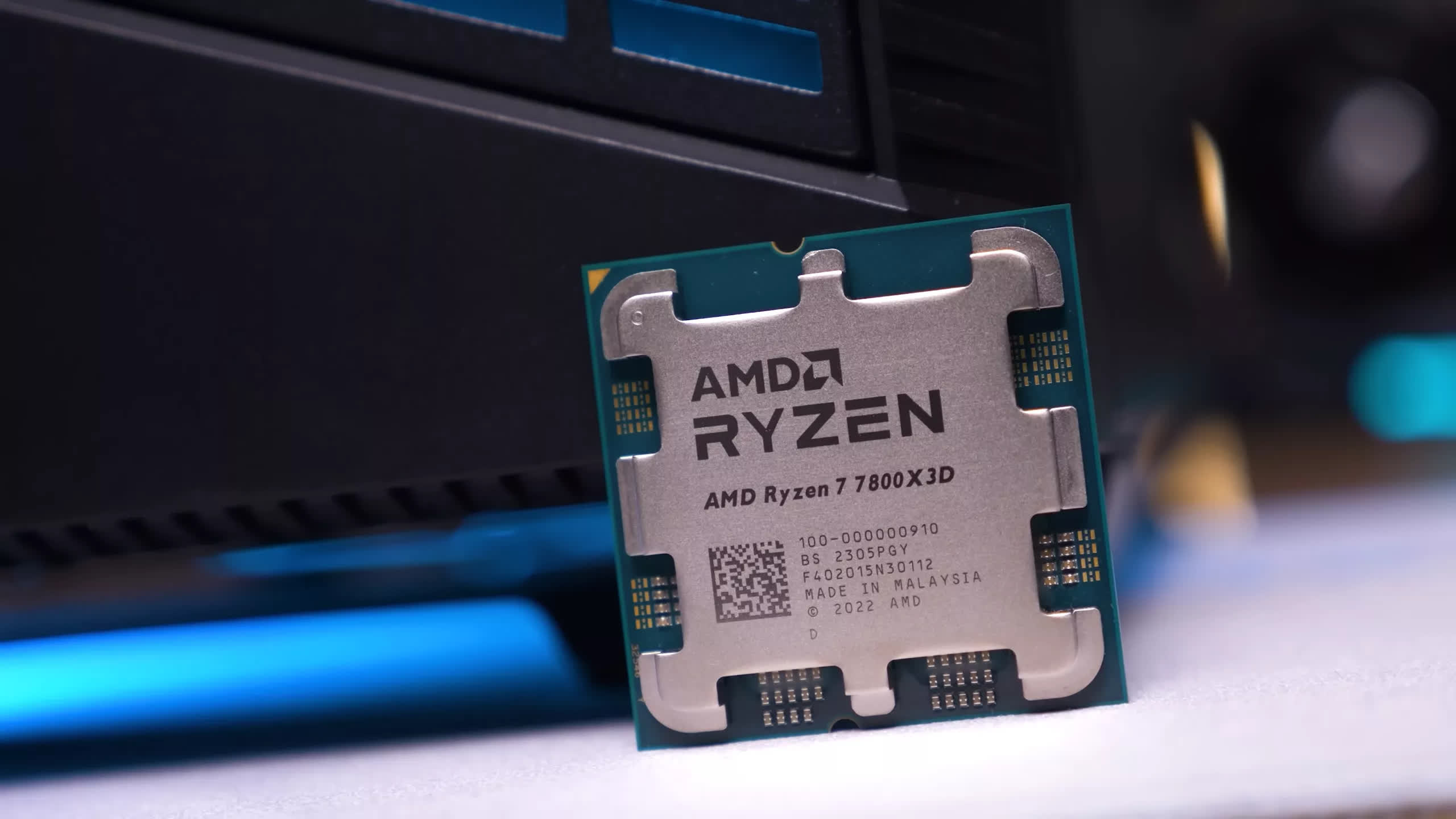Something we hear a lot these days, especially when it comes to CPU benchmarking, is that CPU performance doesn't matter when gaming at 4K. It is often said that you will always be GPU limited, even with a reasonably low-end CPU, so there's no point in buying a "fast" gaming CPU that has proved to deliver strong performance at lower resolutions if you're gaming at 4K.
Now, there are certainly examples that can be pointed to as evidence of this, and most CPU benchmarks that include 4K data will do just that. However, this data can be very misleading, significantly more so than low-resolution testing. In this article, we will explain why.
CPU Reviews in Proper Context
Let's first discuss CPU reviews that include 4K data. Typically, CPU reviews use the most powerful GPU available as that helps to minimize the GPU bottleneck, better isolating the CPU to evaluate its gaming performance. It might seem counterintuitive to use high or ultra-quality presets, but it is often these higher-quality presets that stress the CPU the most. Settings such as animations, level of detail, draw distance, and crowd density can be CPU intensive.
So when you take a GPU like the GeForce RTX 4090 and test it at 4K using ultra-quality settings, the resulting data can be misleading, depending on your preferences, and by preferences, we mostly mean your desired frame rate. First and foremost, a game has to play at the frame rate you deem acceptable, which is hopefully anything from 60 fps up to high refresh rate settings like 120 fps or more.
Take this Starfield data, for example. At 4K using the ultra preset with the RTX 4090 and 7800X3D, we saw an average of 76 fps in our test, which is not bad. But if you're really after 90 fps or more, you might lower the quality settings to medium, or more likely enable upscaling, but the point is, adjustments will be made to the quality settings in order to achieve your desired frame rate.
In this example, we can see that the 7800X3D is capable of pushing over 100 fps in this title and actually caps out at 130 fps, but this information is only obtainable through lower resolution testing.
The problem is that if we only included 4K results, using just the 'Ultra' preset, which is often the case since you're not going to test 10+ CPUs at multiple resolutions using multiple quality presets, then 76 fps would be the cap. This is all the RTX 4090 can manage here.
Therefore, if all CPUs tested allow the RTX 4090 to render 76 fps, it gives the viewer the impression that at 4K CPUs don't matter, as performance appears the same when comparing the 7800X3D and 5800X, for example.
However, the 5800X might cap out at 80 fps, and if you're willing to adjust the quality settings in hopes of hitting 90 fps or more, that wouldn't be possible. This also becomes an issue if you ever upgrade your GPU, which we assume at some point you are going to because when you do, you're more easily going to find the limits of your CPU at higher resolutions.
We've spent a week at the test benches, recording a heap of data on half a dozen games using the Ryzen 5 3600 and Ryzen 7 7800X3D, along with the Radeon 7700 XT, 7900 XT, and RTX 4090. Please don't fixate on the CPUs used for this testing. The purpose was to use two very different processors as it more clearly demonstrates what we are talking about.
The CPUs themselves are not important; it's the frame rates that we want to look at. It's super interesting stuff that explains this topic really well, so let's dive into it…
Hogwarts Legacy Benchmarks
We'll start with the Hogwarts Legacy data at 1080p using the 7700 XT, which is a fairly low-end GPU by today's standards. Sure, it costs $400 right now, but the RTX 4060 is $300. At the more typical 1080p resolution used for testing CPUs, we can see that the 7800X3D is much faster than the 3600, even when using the 'ultra' preset. In this example, we're going from 73 fps to 98 fps, so a 34% increase.
However, if we were to test with the 'medium' quality settings, we see that margin blow out to 74%, and then 83% with low as the Ryzen 5 processor appears to max out at just over 80 fps. This data clearly indicates that if you're okay with around 80 fps on average, the 3600 is fine, but if you want more than that, an upgrade is necessary.
This is why 4K CPU benchmarking is misleading because you learn everything you need to with this 1080p data. If you want 60 fps at 4K, you'll adjust settings accordingly for your GPU, and you know that the 3600 can deliver that performance. But if you want 90 fps or more, the resolution doesn't matter; the 3600 simply cannot achieve that level of performance.
Jumping up to 1440p, the Ryzen 5 3600 is still capped at 84 fps with the same performance seen using the medium and ultra presets. The 7800X3D is slower at 1440p as we're becoming more bound by the Radeon GPU, but it's still possible to push past 100 fps using medium or low presets.
Now at the 4K resolution, we're learning very little about CPU performance as we're mostly looking at the limitations of the 7700 XT here, which is only good for around 67-68 fps using the low preset. There are some noteworthy differences in the 1% lows as the 7800X3D is much faster than the 3600, but if you focus on the average frame rates, it's easy to conclude that CPU performance doesn't matter at 4K, especially when you don't own an RTX 4090.
This is true enough if you're happy with 60 fps gaming, but for those who demand more, you'll either be forced to lower the resolution or more likely enable upscaling, and either option will see the 3600 cap performance to around 80 fps, whereas the 7800X3D can go much faster. Now, let's look at that with the 7900 XT.
Upgrading to the 7900 XT doesn't change much for the Ryzen 5 processor, as expected since the 7700 XT data was entirely CPU limited, even at 1080p. We're seeing a few extra frames with the low and medium presets, but other than that, the results are much the same.
The 7800X3D, on the other hand, sees a 36% performance increase with the ultra preset, then 10% for medium and 12% for low. So those lower quality presets are starting to find the throughput limits of the X3D chip. Whereas previously using the 7700 XT, the 7800X3D was just 34% faster than the 3600 using the ultra settings at 1080p, here it's 82% faster.
Jumping up to 1440p doesn't change many of the results. The low-quality preset with ray tracing enabled is now heavily GPU limited, and we see the margin using the ultra preset reduced to a 61% margin in favor of the 7800X3D, but other than that, the margins are very similar.
Now at 4K, using the 7900 XT, the Ryzen 5 3600 is limited to the same sub-90 fps performance that we saw at 1080p using the 7700 XT. We also see when using the ultra quality settings that the average frame rate performance is nearly identical between the 7800X3D and 3600, as both are limited by the GPU to around 70 fps.
With the RTX 4090 installed, the Ryzen 5 3600 is actually slightly slower at 1080p compared to what we saw with the 7700 XT, a result of Nvidia's driver overhead issue which we've explored before. This effect is most noticeable using the 7800X3D with the low-quality preset as it was actually 15% faster here when using the 7700 XT. But we're not here to explore the Nvidia overhead issue, so let's move on.
What we do see is an 85% performance increase for the 7800X3D over the 3600 when comparing the ultra-quality data at 1080p, and this seems to be the true performance difference between these two CPUs. The margin is bigger with the low preset using ray tracing, 94% there, but that data is more for scientific curiosity as it's doubtful anyone would use that combination of quality settings.
The point is, just as we found with the 7700 XT at 1080p, the Ryzen 5 processor is limited to around 80 fps; it can't push frame rates higher than that.
So as we jump up to 1440p, it's no surprise to find the 3600 limited to 78 fps, or 65 fps when using the ultra preset. We also find the same results for the 7800X3D as the data is still largely CPU limited there.
Then at 4K, the 7800X3D data using the low and medium settings is still CPU limited, and although it is possible to achieve higher frame rates with the 7900 XT, the overhead issue means GeForce GPUs limit performance to around 130 fps. The 7800X3D is still 41% faster than the 3600 at 4K when using the ultra quality settings but as mentioned earlier, don't focus too much on the CPUs used; we're more trying to show you how resolutions and quality settings scale.
In this example, we know the 7800X3D can drive 120 fps using the ultra settings, seen at 1080p, so with the right quality settings or GPU, this can also be achieved at 4K, assuming the CPU can deliver that level of performance.
Starfield Benchmarks
Another new game we can look at is Starfield, and in this example, the Ryzen 5 3600 can't render more than 60 fps. Though if we were to compare with the 7800X3D at 1080p, using the ultra preset with the 7700 XT, we'd conclude that both CPUs deliver similar performance. Of course, if we lower the quality settings, which results in less GPU-bound data, we see that the 7800X3D is up to 69% faster using the low settings.
Again, we don't need 4K data to tell us how the 3600 performs at 4K, and in fact, we don't even need a faster GPU. It's really all about the frame rates, and if you are happy with 60 fps gaming, then the 3600 can deliver that, regardless of resolution. But if you want 90 fps or more, the 3600 will need to be upgraded.
As we increase the resolution to 1440p, we find that both the Ultra and High results are heavily GPU limited, but again, we're looking at sub-60 fps performance. But if you were to use the high or ultra settings with the 7700 XT, you'd conclude that CPU performance doesn't matter.
Then at 4K, we see that CPU performance for this data doesn't matter, regardless of the settings used. The 3600 is able to match the 7800X3D, and this is what a lot of 4K review data looks like, as most of those examples are heavily GPU limited with less than 60 fps. If you are gaming at 4K with a 7700 XT, you would not only be lowering the quality settings but also using upscaling, so technically you're not gaming at 4K.
But let's turn up the GPU power with the 7900 XT. As expected, this does nothing for the Ryzen 5 3600, as that data is still heavily CPU limited to around 60 fps. The 7800X3D, on the other hand, sees a 53% performance increase when using the ultra settings, averaging 92 fps, but we also see that it's good for up to 131 fps when using the low preset.
Increasing the resolution to 1440p does nothing for the 3600; it's still capped at 60 fps. However, the 7800X3D is 27% faster when using the ultra preset and up to 92% faster with the low-quality settings.
Then at 4K, much of the data is GPU limited to 60 fps or less, though the 7800X3D is up to 20% faster when using the low-quality settings. For those unhappy with 60 fps, this is another example where you would probably drop the quality settings to high or medium, and then enable upscaling, pushing performance more towards what was seen at 1440p.
Nvidia's overhead issue isn't present in Starfield, so we're not seeing a decline in performance anywhere with the RTX 4090 at 1080p. Rather, this data shows us just how much faster the 7800X3D is, delivering more than twice the performance of the 3600.
Even at 1440p, the results are very similar for the most part. Using the ultra preset, the 7800X3D was 84% faster, 98% faster using high, and then 118% faster with the medium settings.
Finally, at 4K, we see that the Ryzen 5 3600 is still capped at 60 fps as that's the maximum level of performance that CPU can deliver in our test. But even if the cap was 70 fps, that's not ideal if you require a 90 fps minimum. The 7800X3D, on the other hand, can throughput 130 fps in this title, so although we're only seeing 76 fps with the ultra preset, it can go faster, you just have to reduce the GPU load, either by lowering visual quality settings or enabling upscaling.
Counter-Strike 2 Benchmarks
Now, where the "CPUs don't matter at 4K" fallacy falls flat is with esports titles. While we are aware this claim mostly comes from those playing single-player games at relatively low frame rates, it's good to be aware that CPU reviews aren't aimed squarely at your specific use case.
Take Counter-Strike 2, for example. For this game, 150 fps isn't a lot; in fact, many serious gamers will tell you it's not nearly enough, with most CS2 gamers aiming to keep frame rates above 300 fps. They also prefer to use medium to low quality settings as this not only helps boost frame rates but can make it easier to spot enemy players.
Using the 7700 XT at 1080p, we see that the Ryzen 5 3600 caps out at around 180 fps in our test, so certainly playable, but not ideal for competitive gameplay. The 7800X3D, on the other hand, starts at around 250 fps but can go to almost 500 fps with the 7700 XT.
So, once again, this data really tells us everything we need to know. If you require over 200 fps, the Ryzen 5 3600 won't deliver that level of performance, regardless of the resolution used.
At 1440p, the very high and high-quality settings for the 7800X3D are much more GPU limited, and of course, performance for the 3600 is much the same.
Then finally, at the 4K resolution, we find more of the same, essentially the frame rates with the 3600 are much the same at 1080p, 1440p, and 4K, as that data is heavily CPU limited. With the 7800X3D, we do find the limits of the 7700 XT, even when using the low and medium presets.
The 7900 XT data is much the same, really. Again, despite using a faster GPU, the 3600 still limits performance to at best 179 fps, whereas the 7900 XT can go much faster than that.
At 1440p, we start to find the real limits of the 7900 XT using the very high and high-quality presets, though once again the data is CPU limited using medium and low.
Then at 4K, we find comparable performance between the two CPUs used for testing if we use the very high-quality settings. But with medium, we see that the 7800X3D is still 119% faster. The RTX 4090 data is much the same, so we'll skip it and wrap this up.
What We Learned
Before we move on, you should know we tested a few more games such as Helldivers 2, Star Wars Jedi Survivor, and Assetto Corsa Competizione, and the results were all very similar to what we've already shown you, so we didn't need to include more of the same data to draw a solid conclusion.
Now, we can already envision comments claiming that the data here is misleading because the Ryzen 5 3600 is so much slower than the 7800X3D, and if that's how you feel, we're sorry to say it, but you've missed the point. Yes, we did use an extreme example to illustrate the point we're trying to make, but the point is, it's the frame rate that's important, not the resolution.
Looking at heavily GPU-limited 4K results that often show you sub-60 fps frame rates aren't useful for gauging CPU performance, especially if you demand more than 60 fps and are willing to adjust quality settings in an effort to achieve your desired frame rate.
Moreover, most gamers are now enabling upscaling at 4K, and really, you should as well, since FSR and DLSS work best at 4K, often having no noticeable impact on visual quality while dramatically boosting performance, that is if you have a CPU that can drive more frames, of course.
As an example, here's the medium-quality Starfield data that we just looked at using the 7900 XT: the 3600 was good for 60 fps and the 7800X3D just 64 fps. However, if we enable upscaling using the quality mode, performance goes unchanged for the 3600, while the 7800X3D configuration enjoys an almost 30% performance boost, and now we're gaming at over 80 fps on average.
Now, the most common argument we hear for why 4K data should be included in CPU reviews is because you game at 4K, and therefore you just want to know how much difference there is at that resolution. But that's a bit like asking 'how long is a piece of string' because testing an RTX 4090 at 4K using ultra settings doesn't exactly tell you the full story, as we just showed through a series of benchmarks.
There are so many unknown variables, or variables that are likely to change, and really, you're asking the wrong question. The question you should be asking is 'how many frames can I get at 4K', and to answer that, you need to know the peak performance of the CPU.
For us as reviewers, testing an RTX 4090 at 4K using the standard preset we use for testing, likely either high or ultra, doesn't tell the viewer anything useful, and in fact, will likely mislead them. We're assuming whatever the resulting performance is, that's what you'll be happy with, even if it ends up being less than 60 fps. But in reality, you're going to enable upscaling or turn down quality settings to boost the frame rate, and when you do that, you need to know if the CPU is capable of delivering that level of performance.
Though please note, reviews aren't designed to tell you exactly how many frames you'll get in a given title; it's ballpark as we're only testing a small section of the game, but the performance relative to another product should scale fairly consistently, so it does give you a very good idea of how much better one product will perform when compared to another.
Also, as a side note, reviewers don't test at low resolutions to make you feel bad about your current CPU or entice you into upgrading; we test at low resolutions to clearly show you the real performance differences between CPUs, so you can make an informed purchase.
As for upgrading, it's entirely up to you to work out if you need to upgrade. Are you happy with your current level of performance, and if not, are you CPU limited? This is easy to determine by lowering your resolution or quality settings to see if GPU performance increases; if not, you're most likely CPU limited.
Finally, had we used the Ryzen 5 7600, the margin to the 7800X3D would be a lot smaller, and in many instances at 4K, there would be no difference between those two CPUs, and of course, there's also a lot less in it at 1080p as well. You'd really only buy the 7800X3D over the 7600 or 7700 series because you want the best of the best, either because you can comfortably afford it or because you really do require maximum performance.
But in any case, when comparing these CPUs, it's important to know their true performance, because although you might not be able to unlock it now, that extra performance could come in handy for future GPU upgrades. Though we're not suggesting spending more than you've budgeted for on your CPU, especially when parts like the Ryzen 7 7700 are perfectly adequate, it's just good to have all the right information so you can make an informed purchase.
